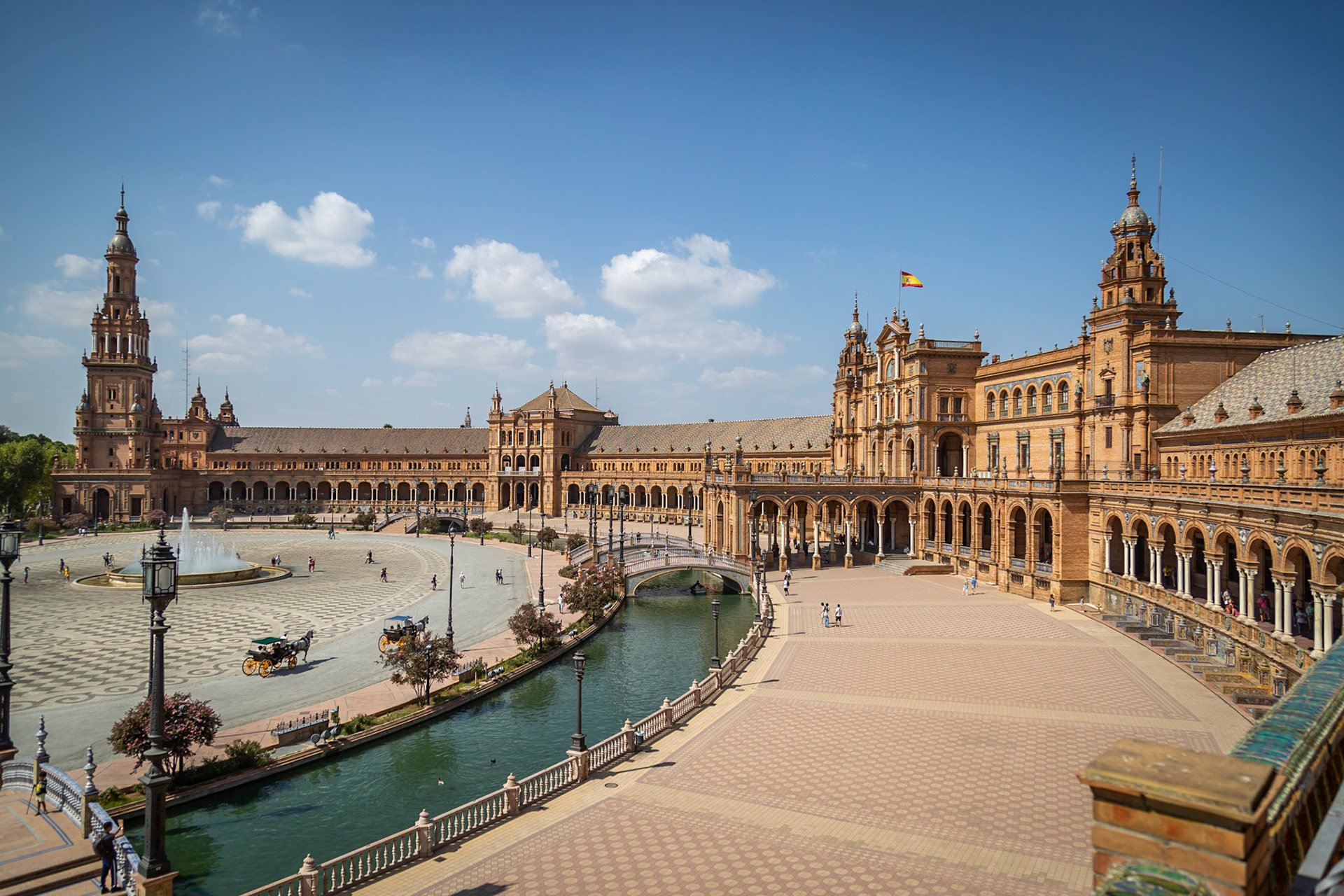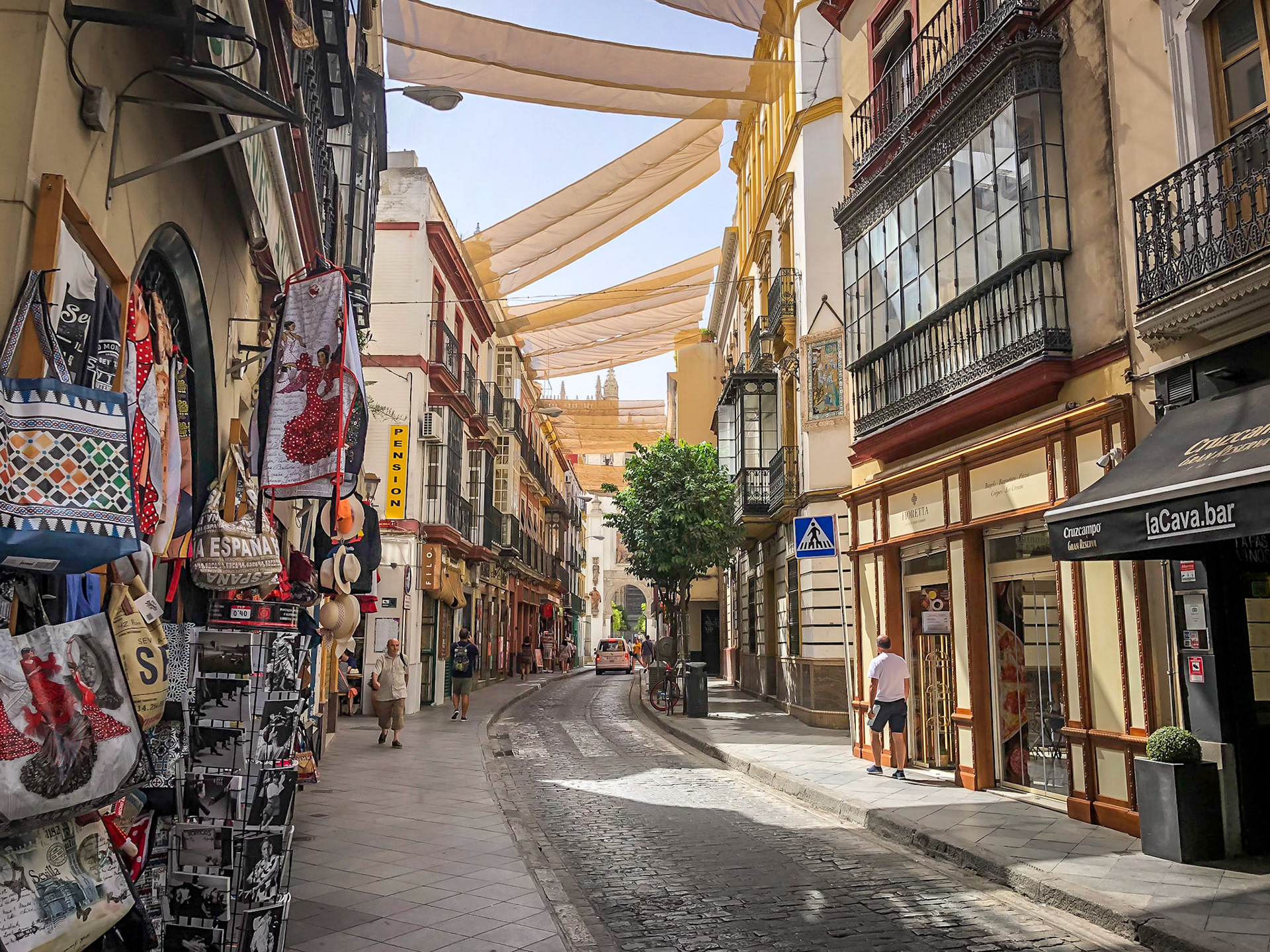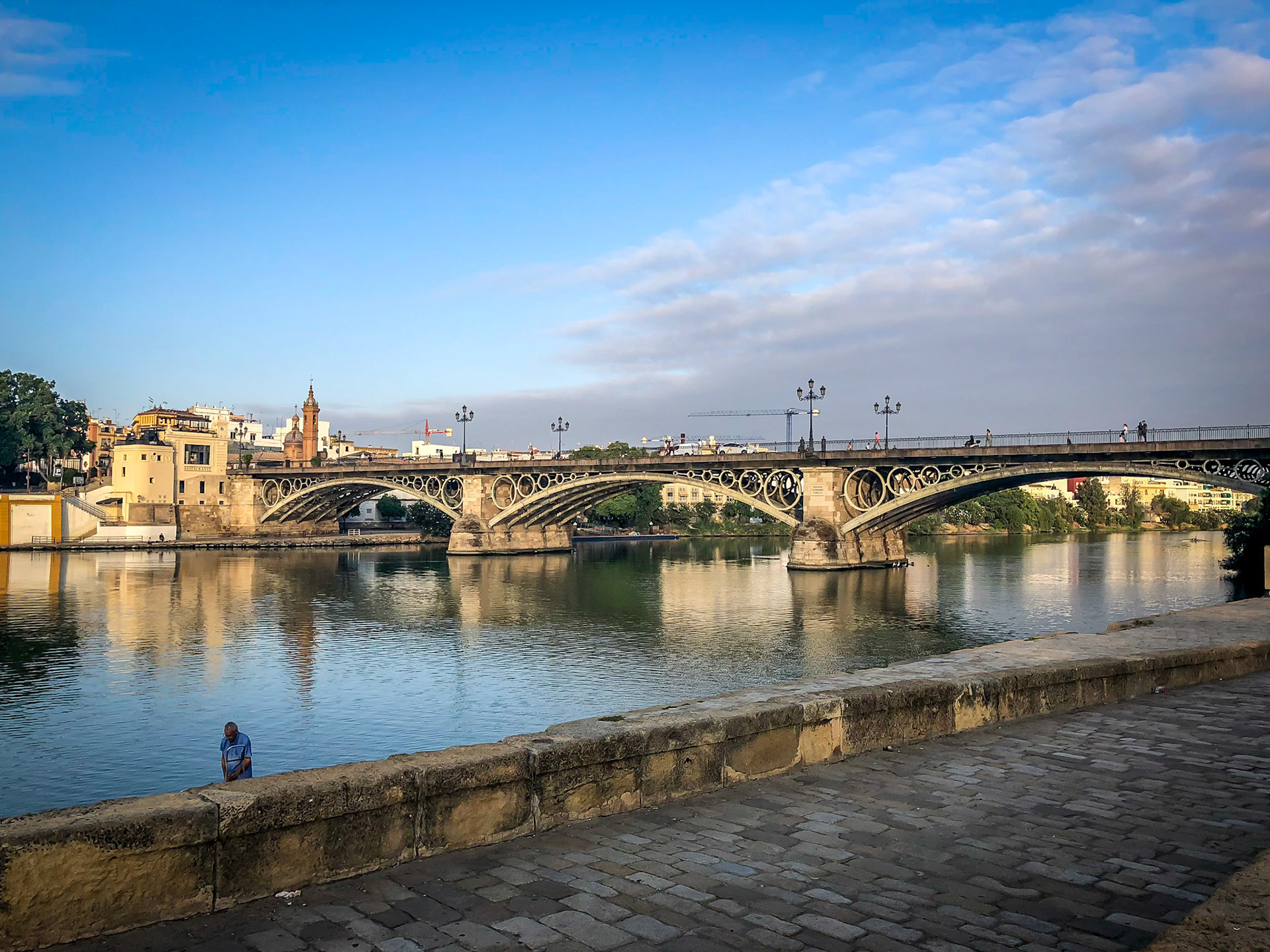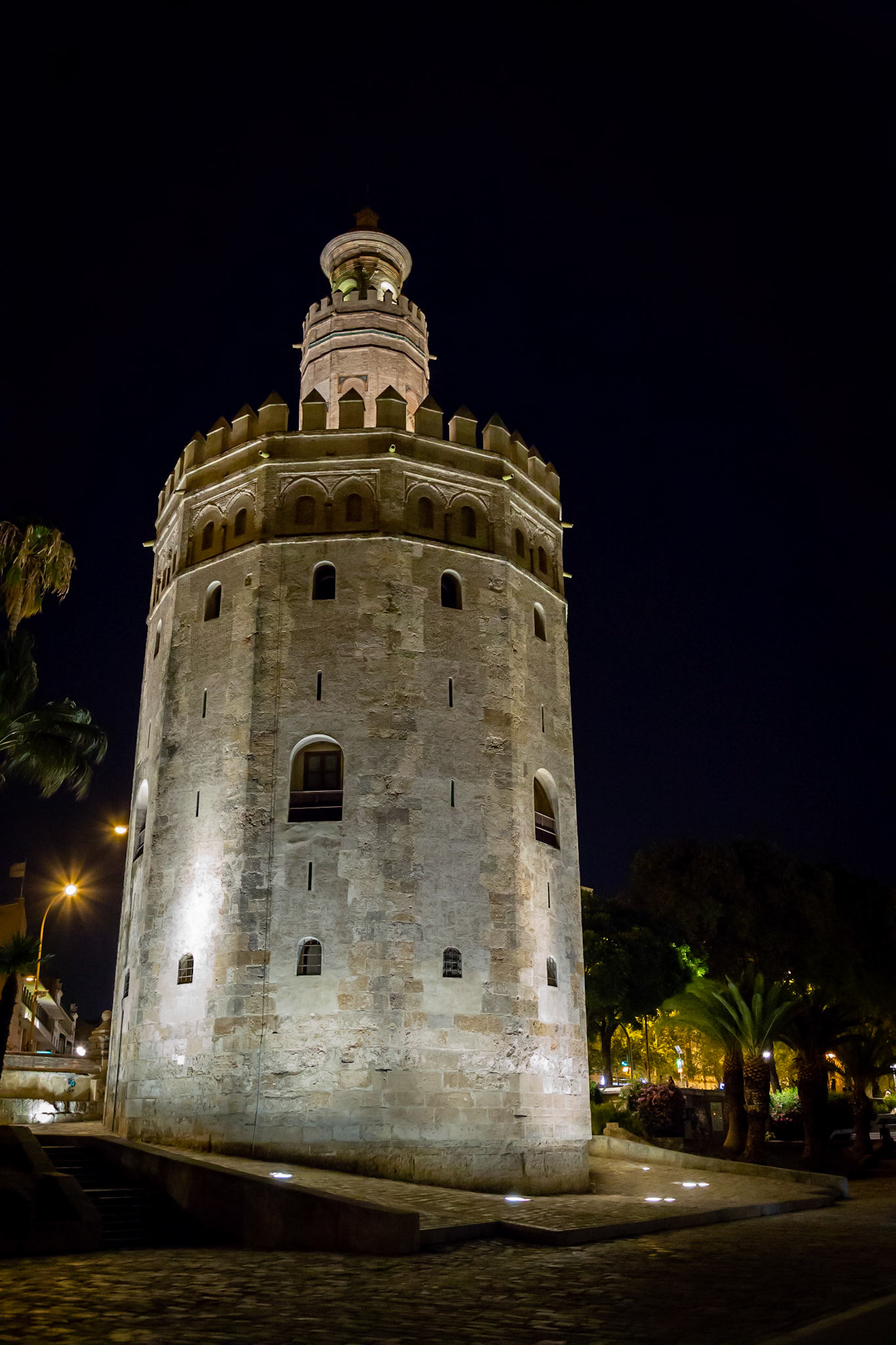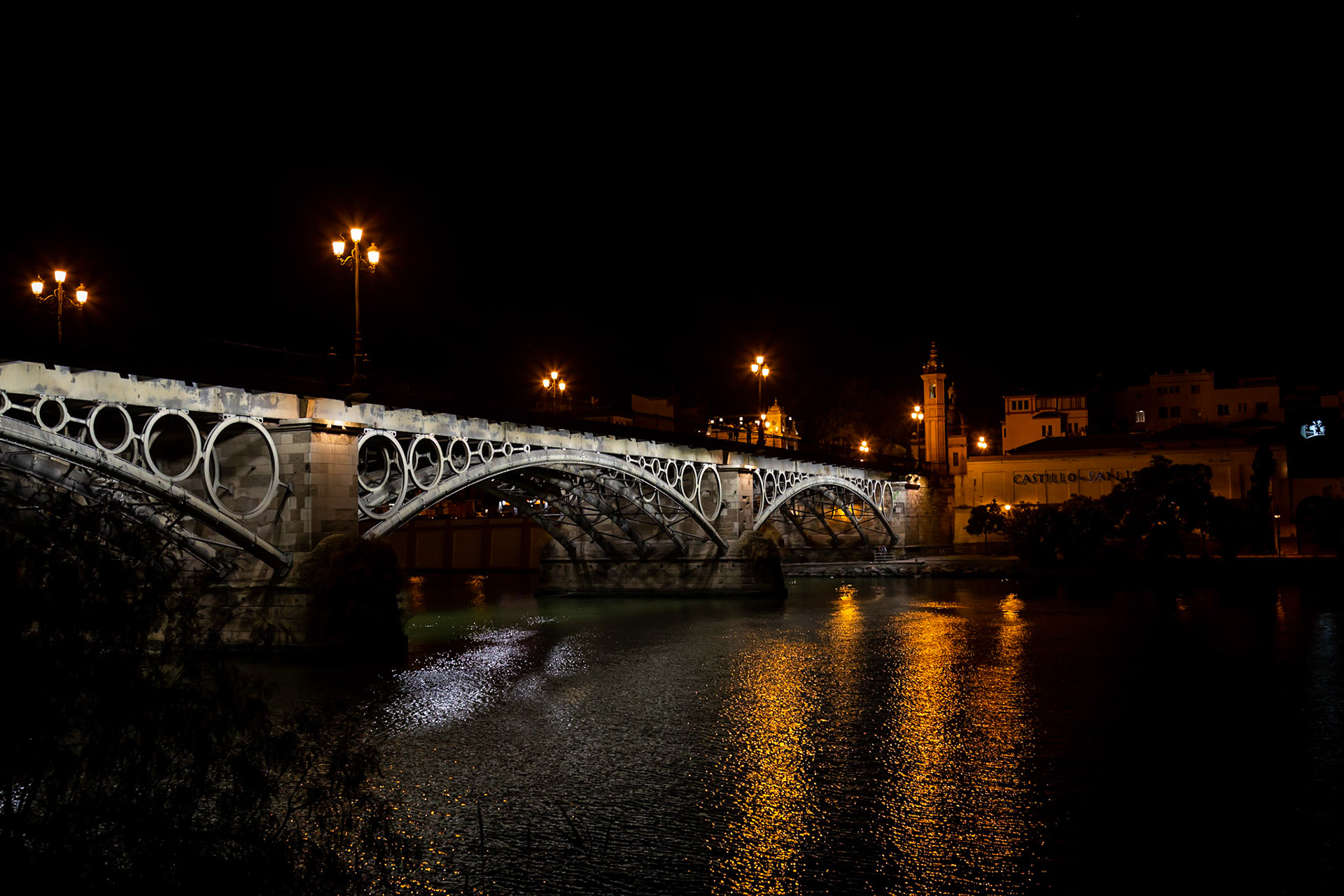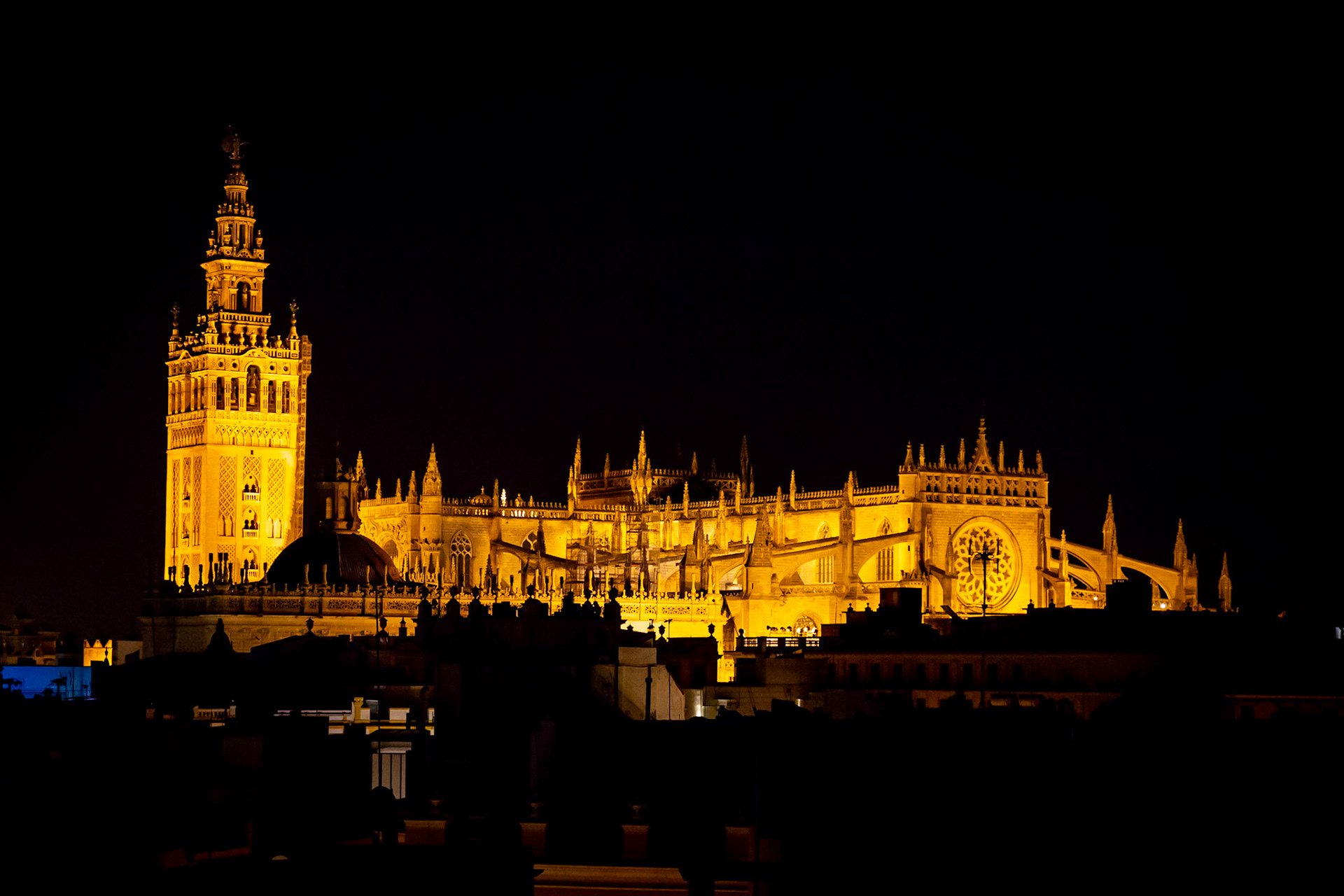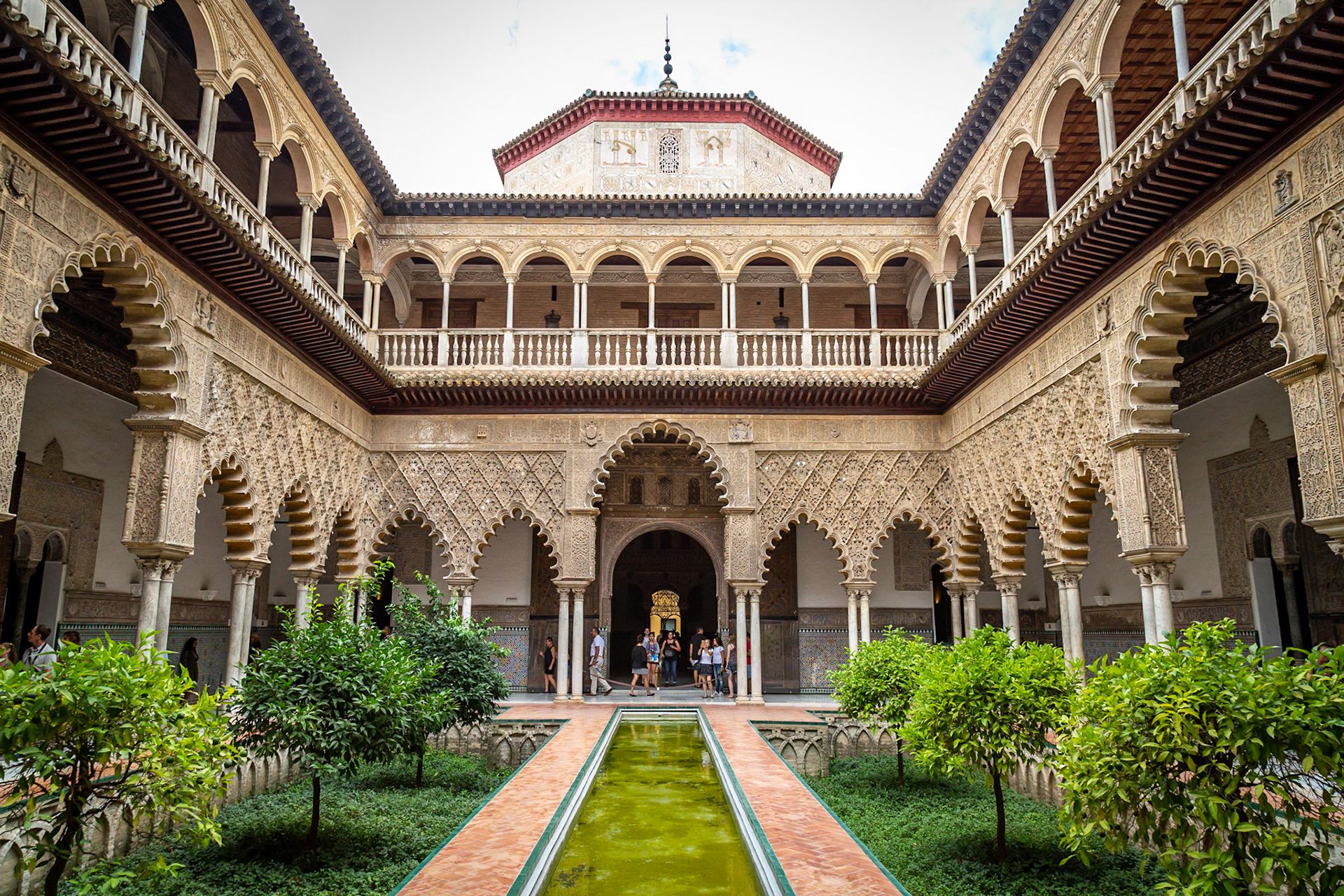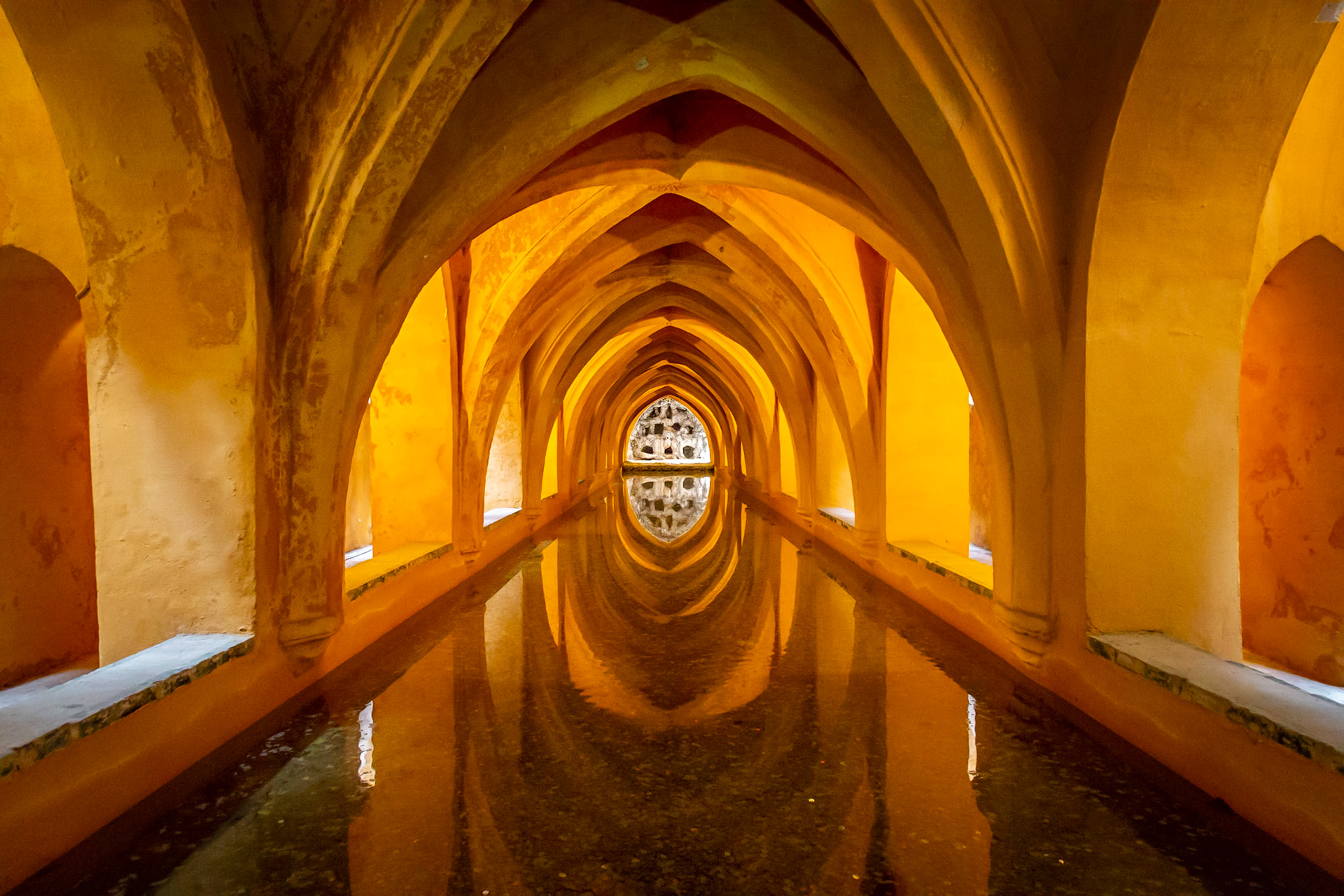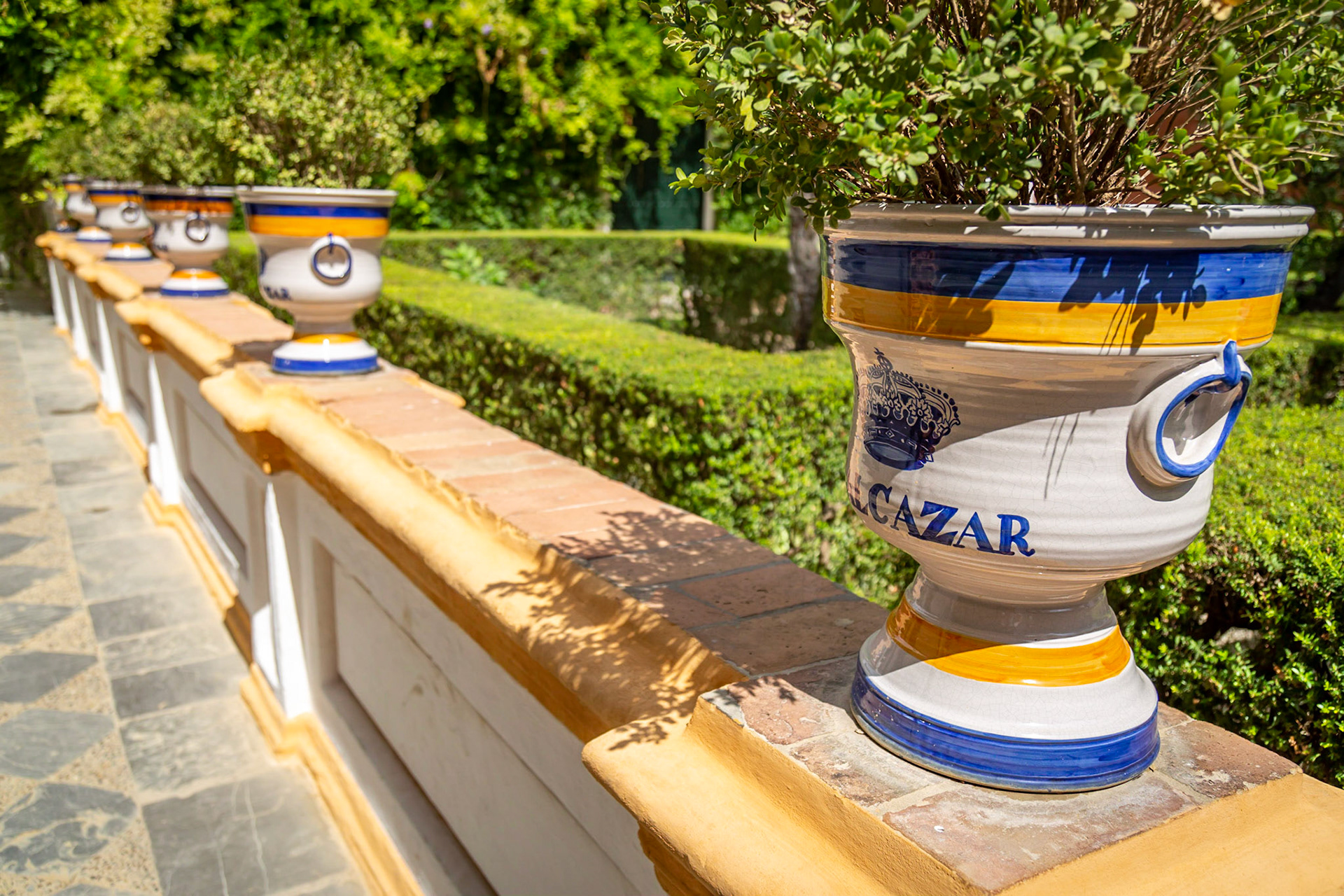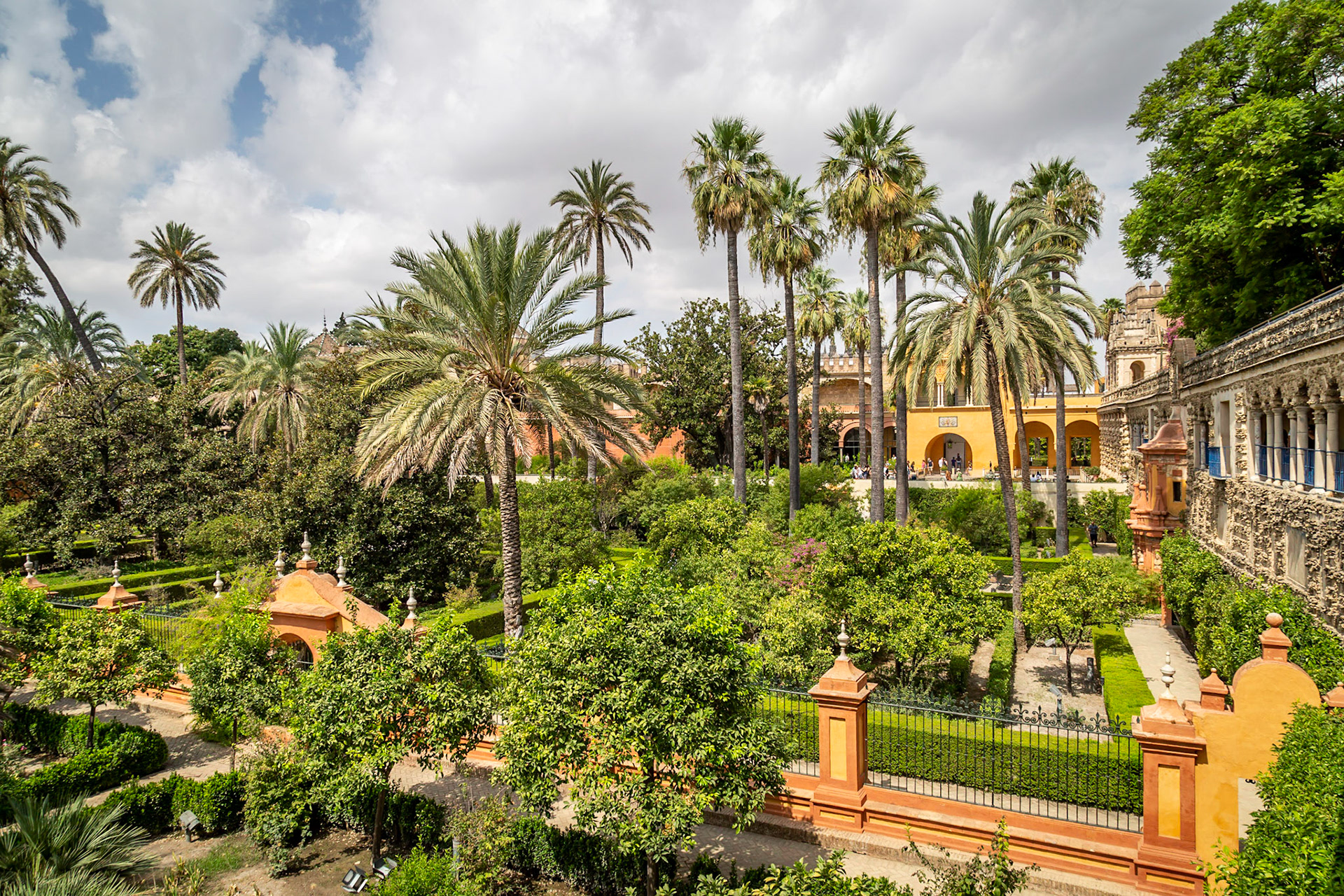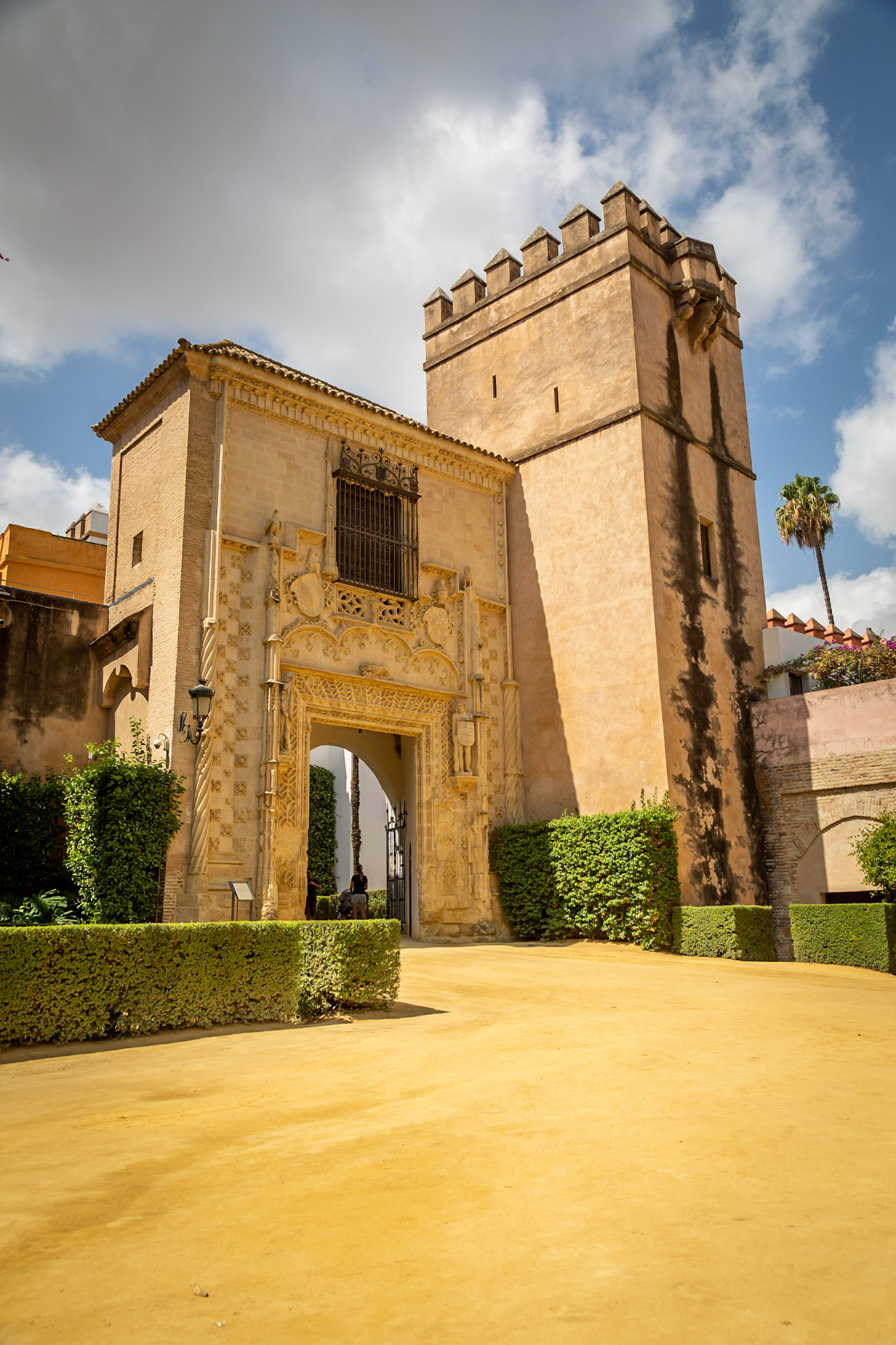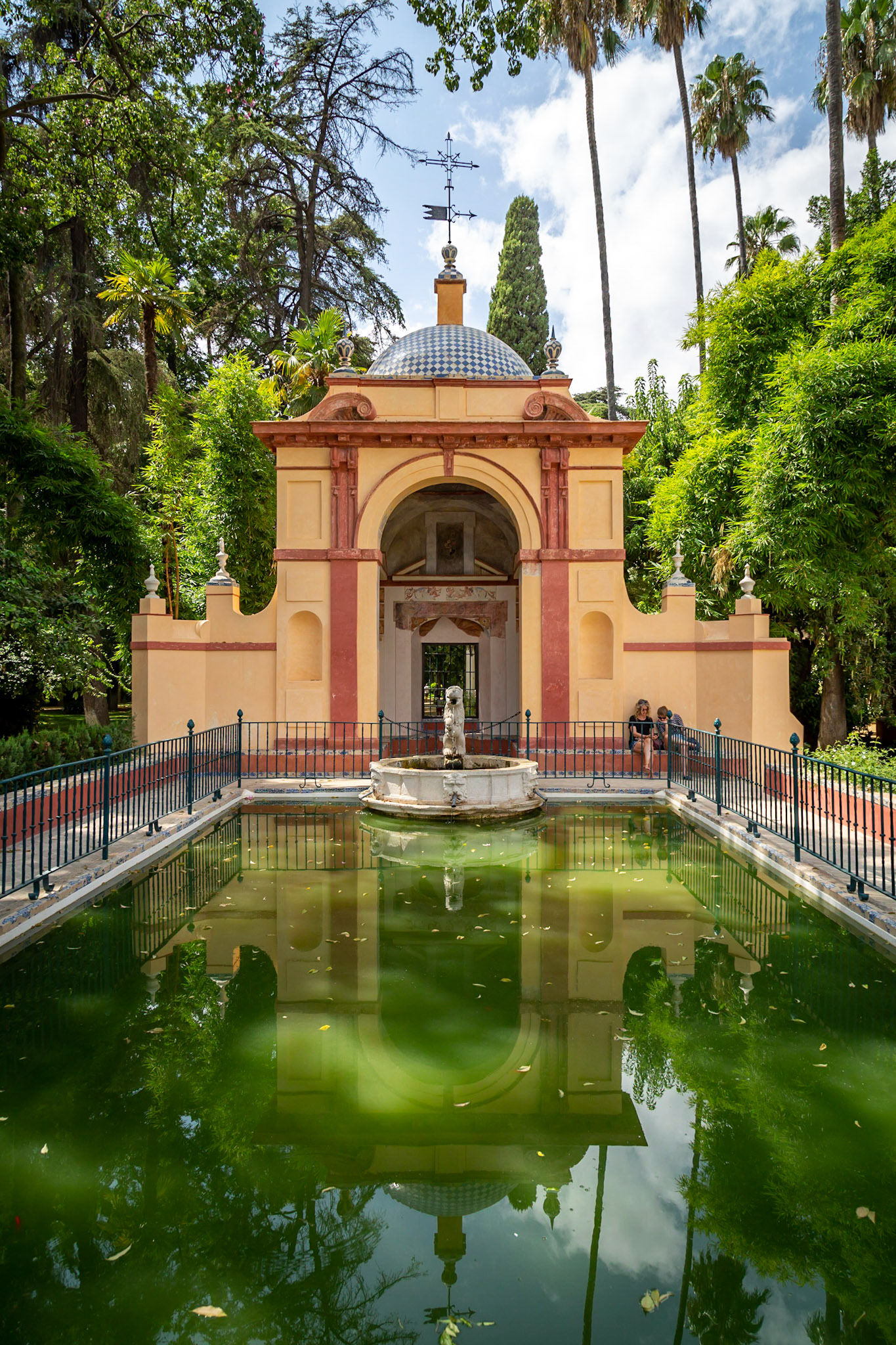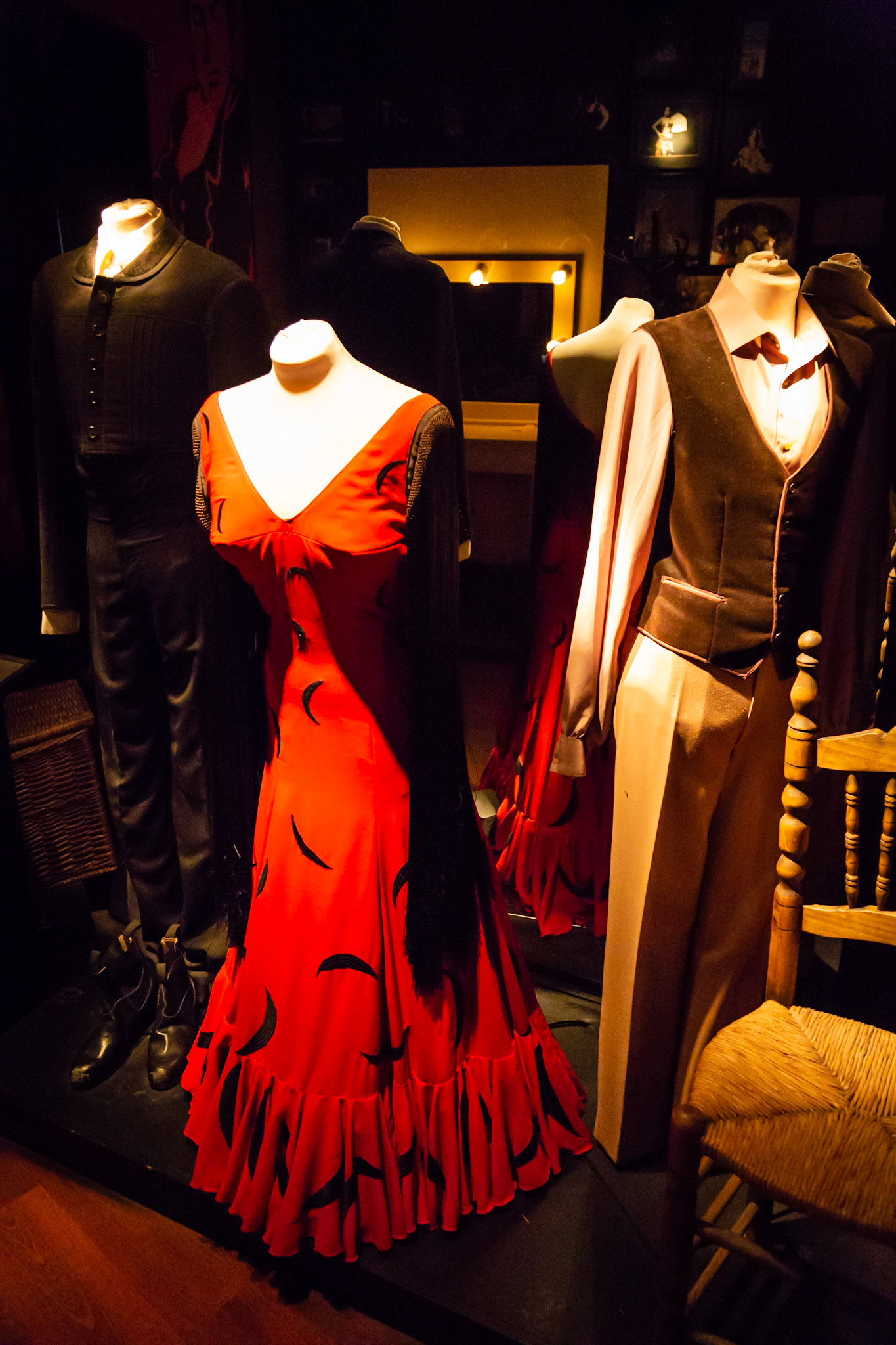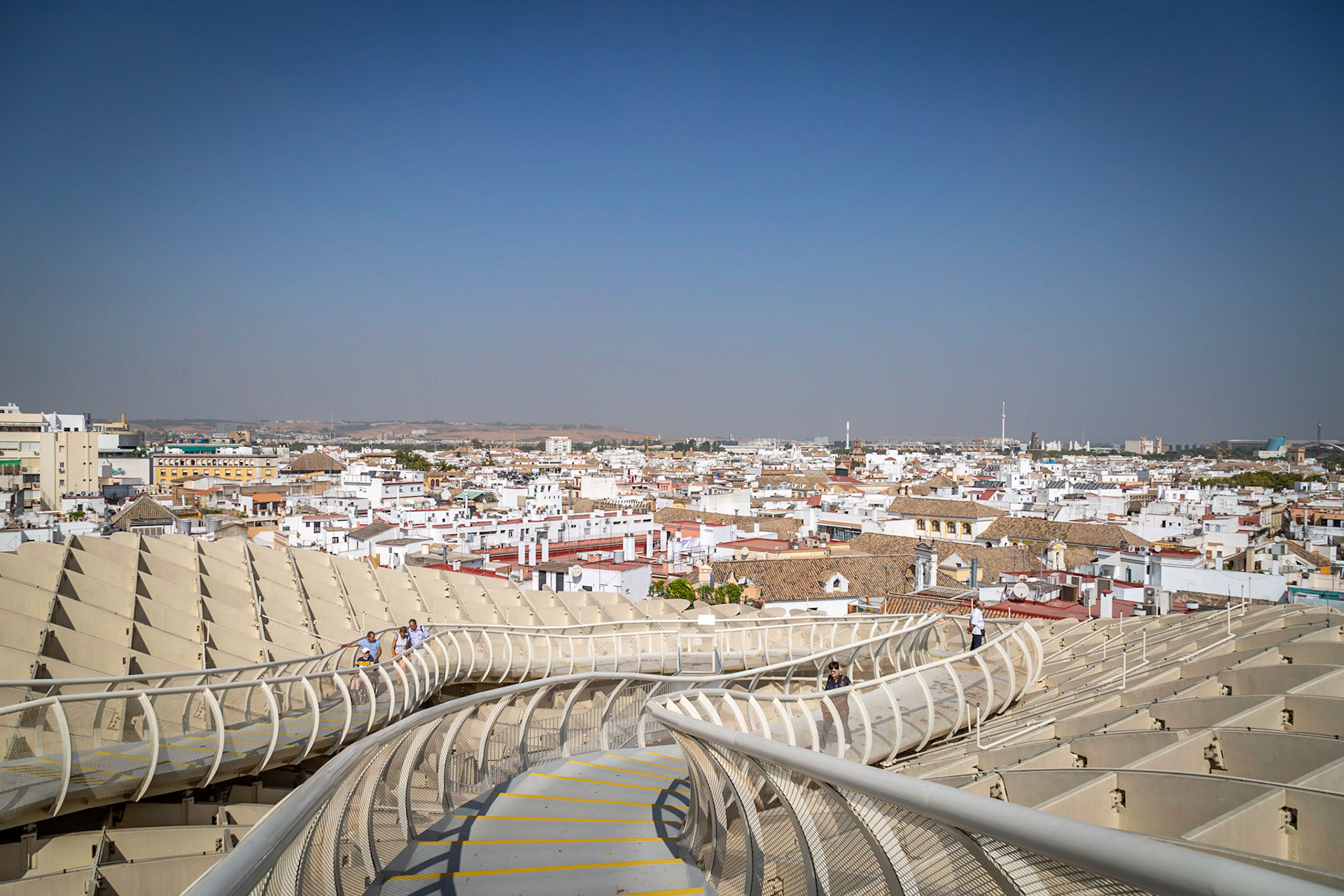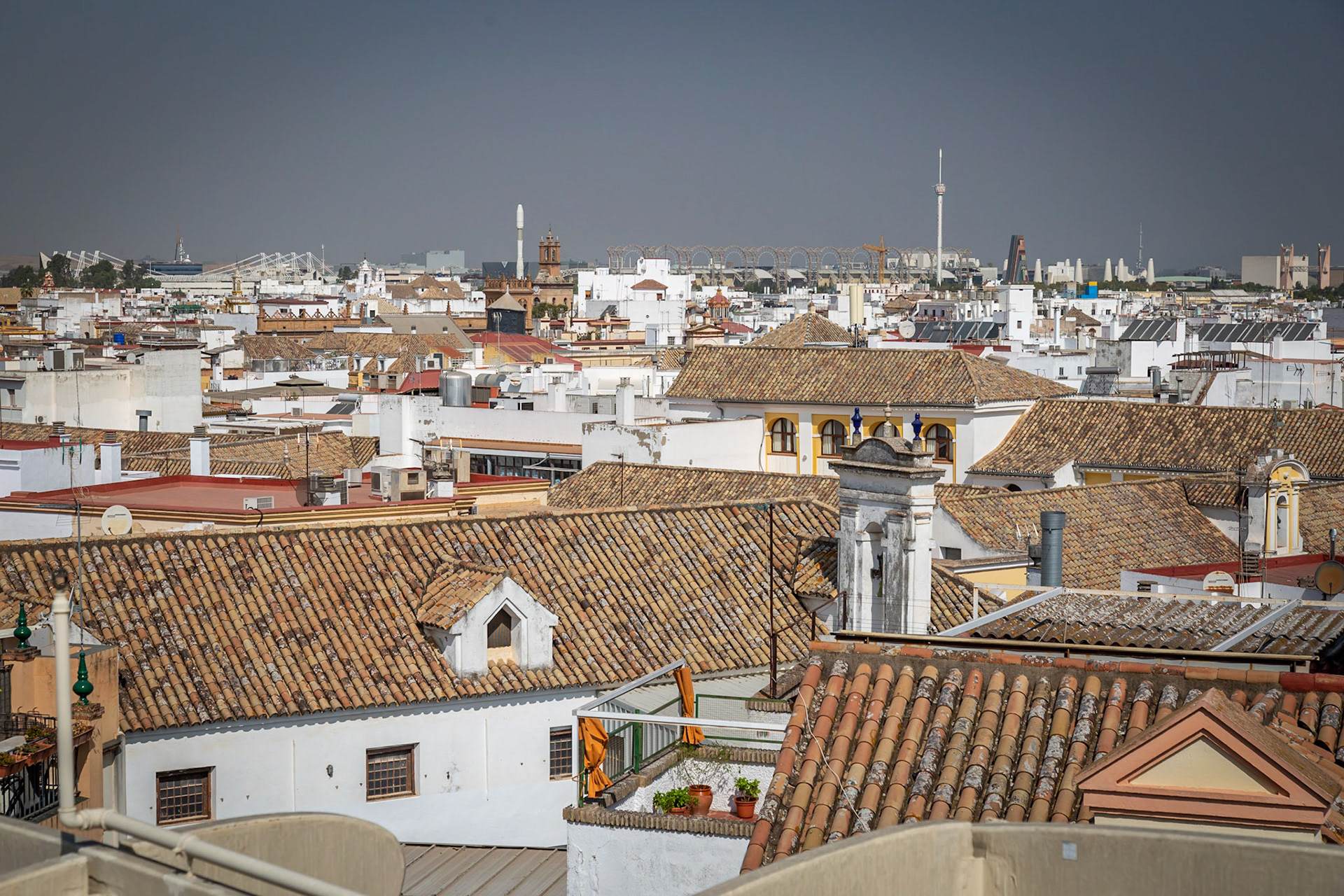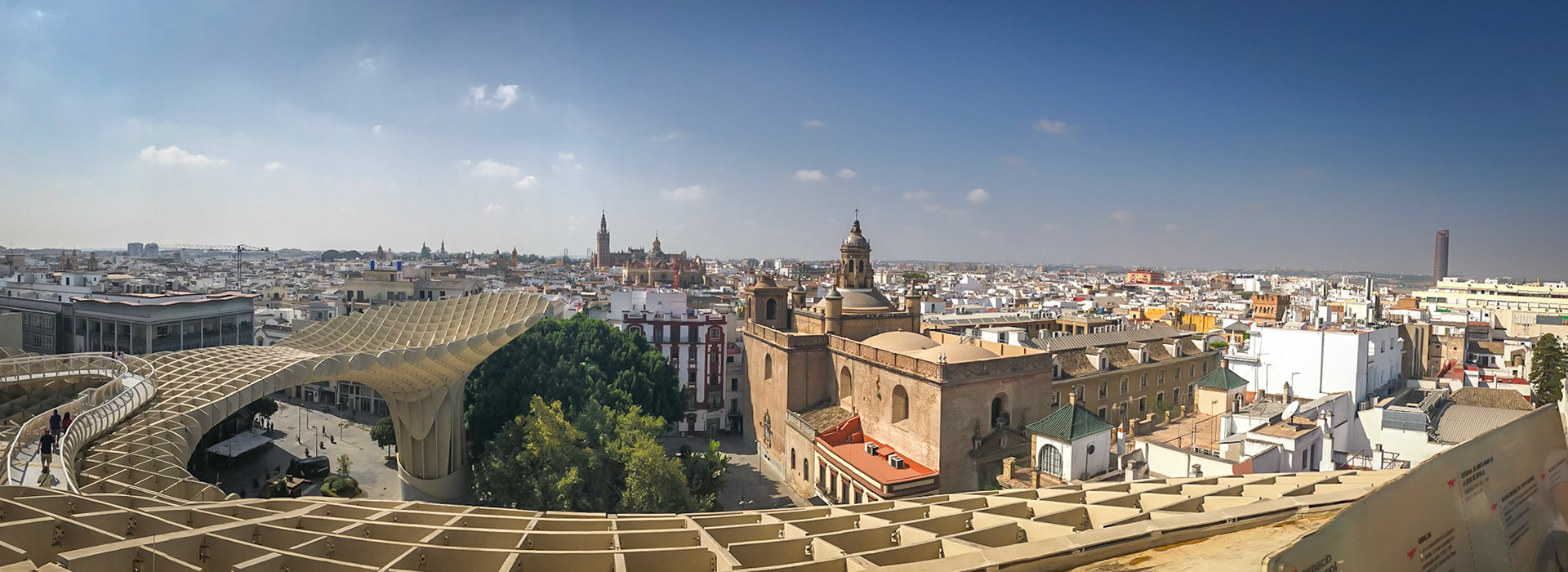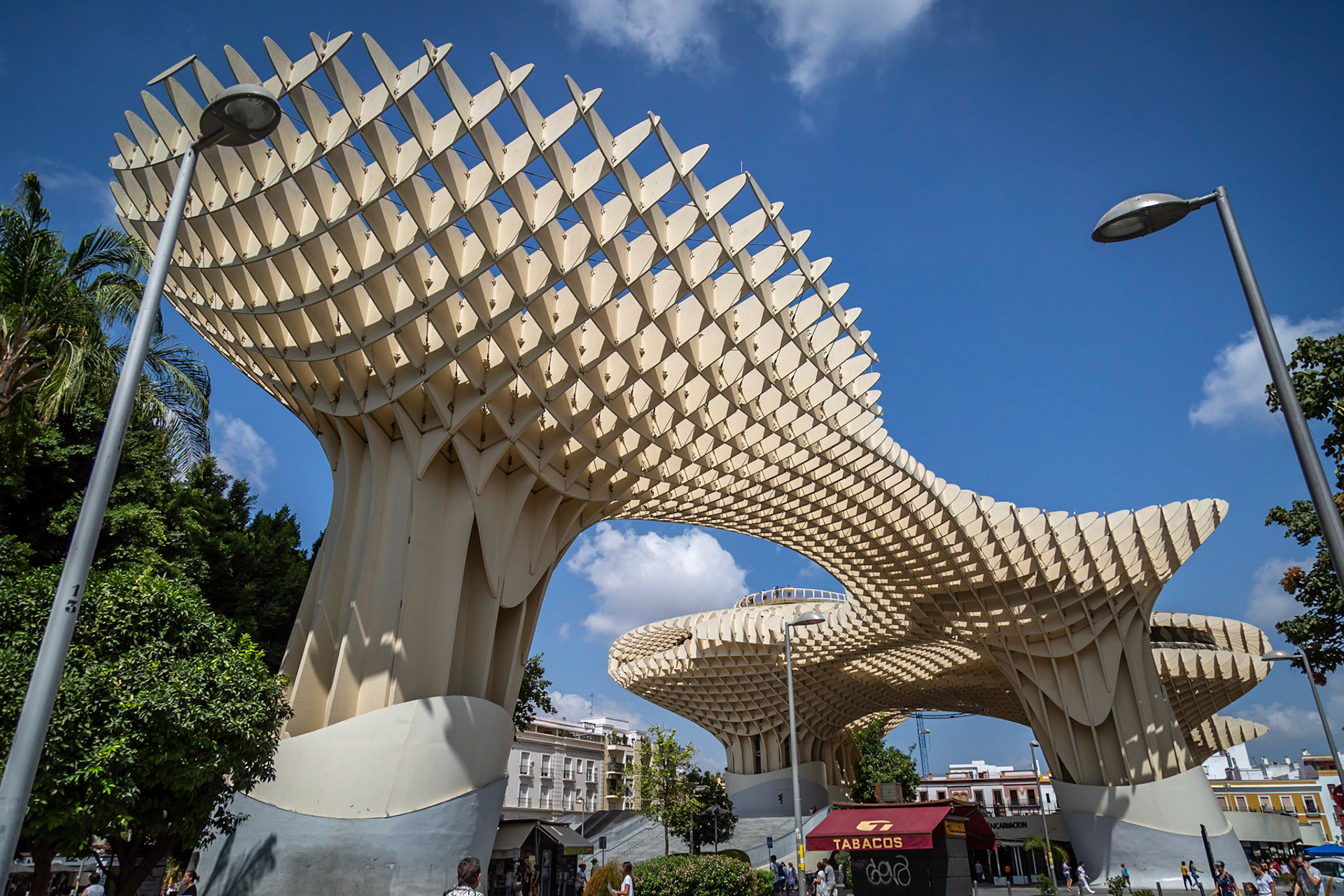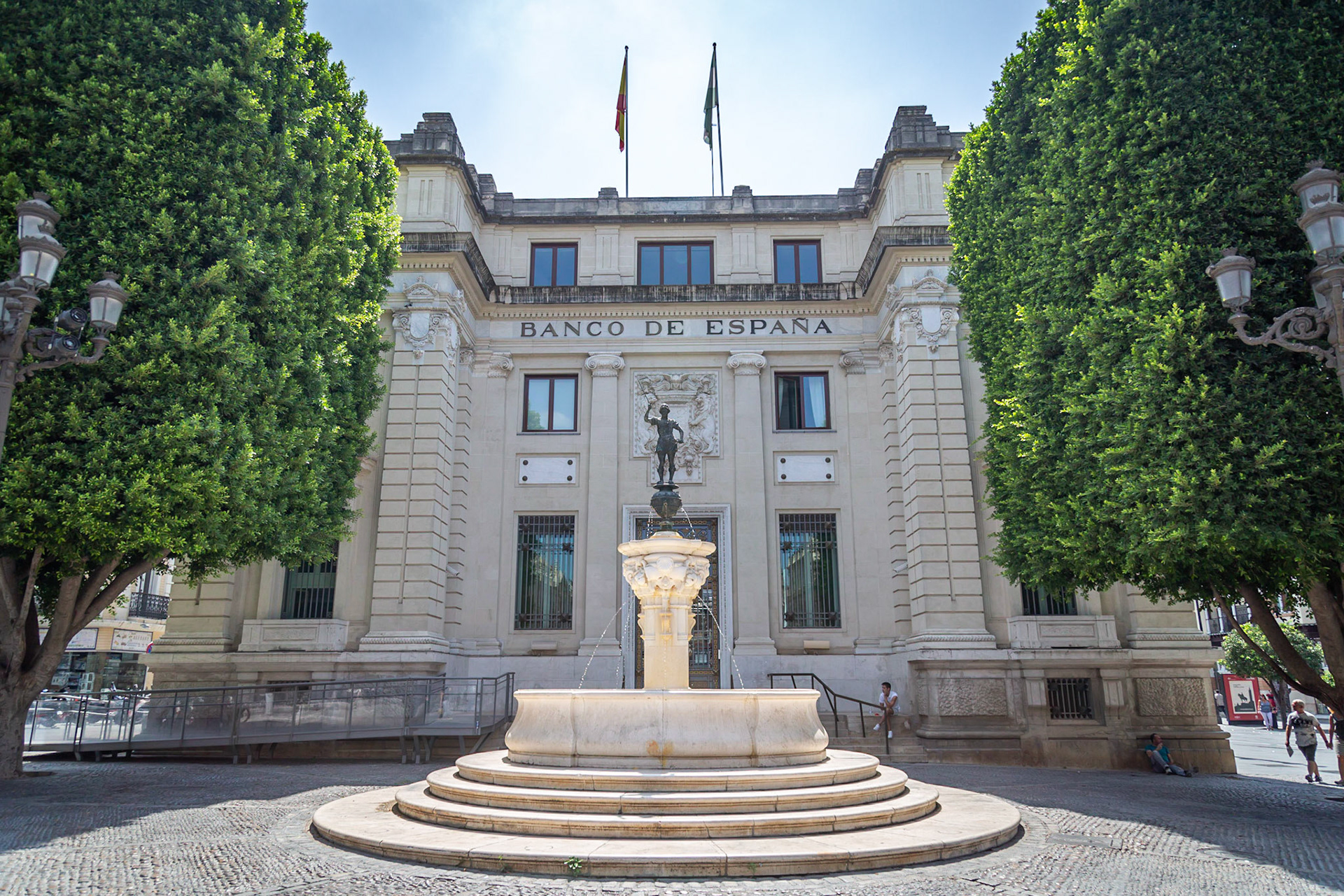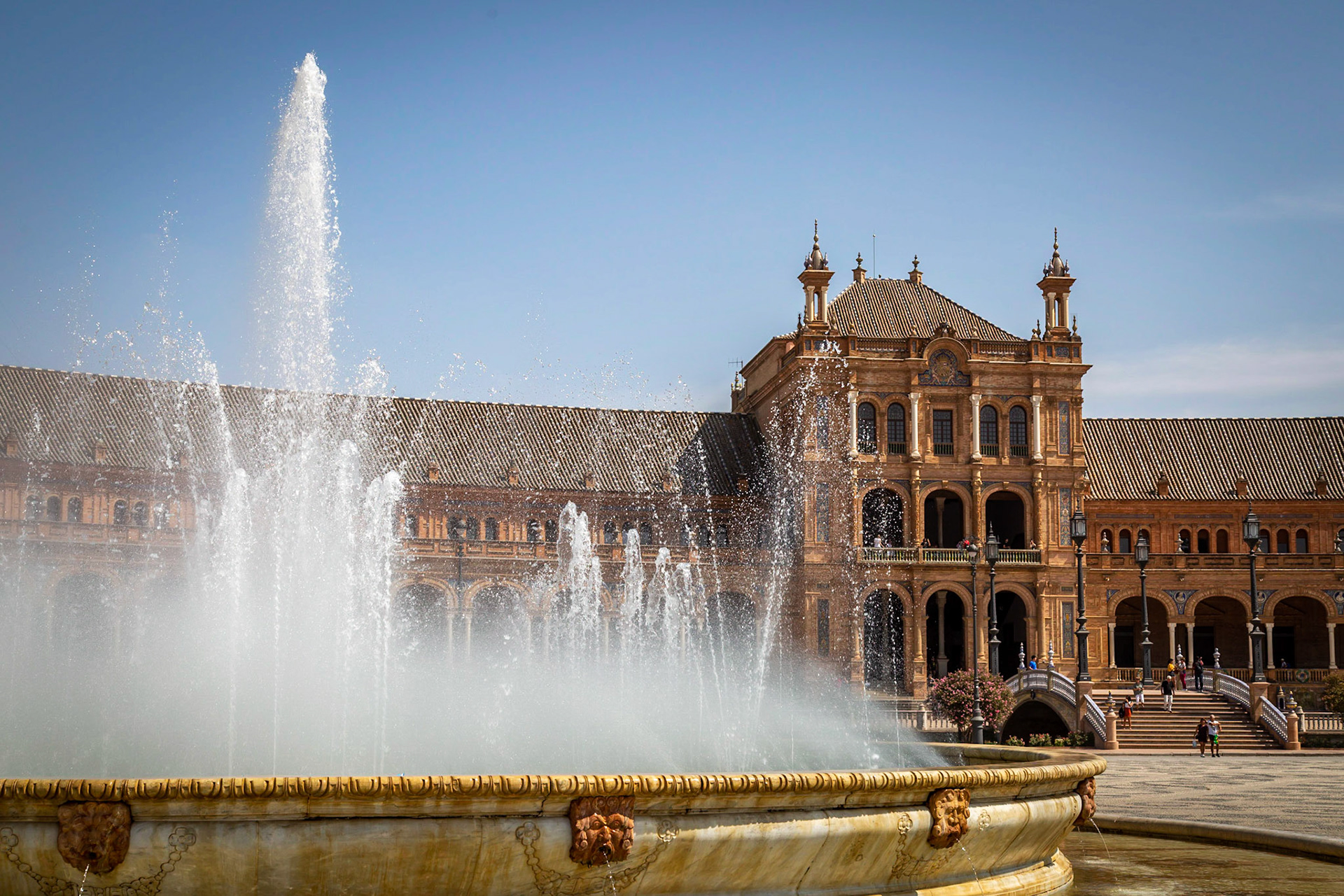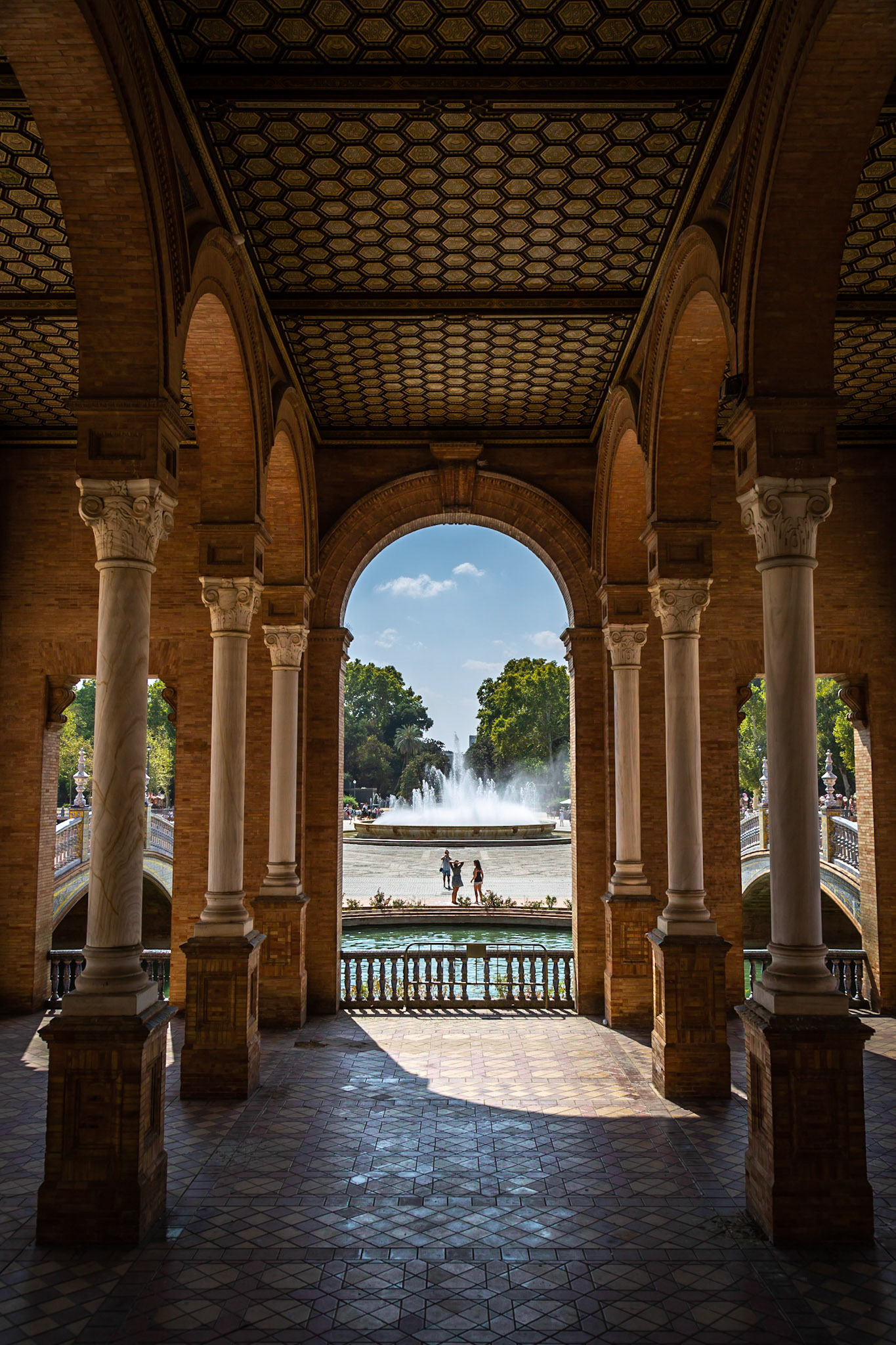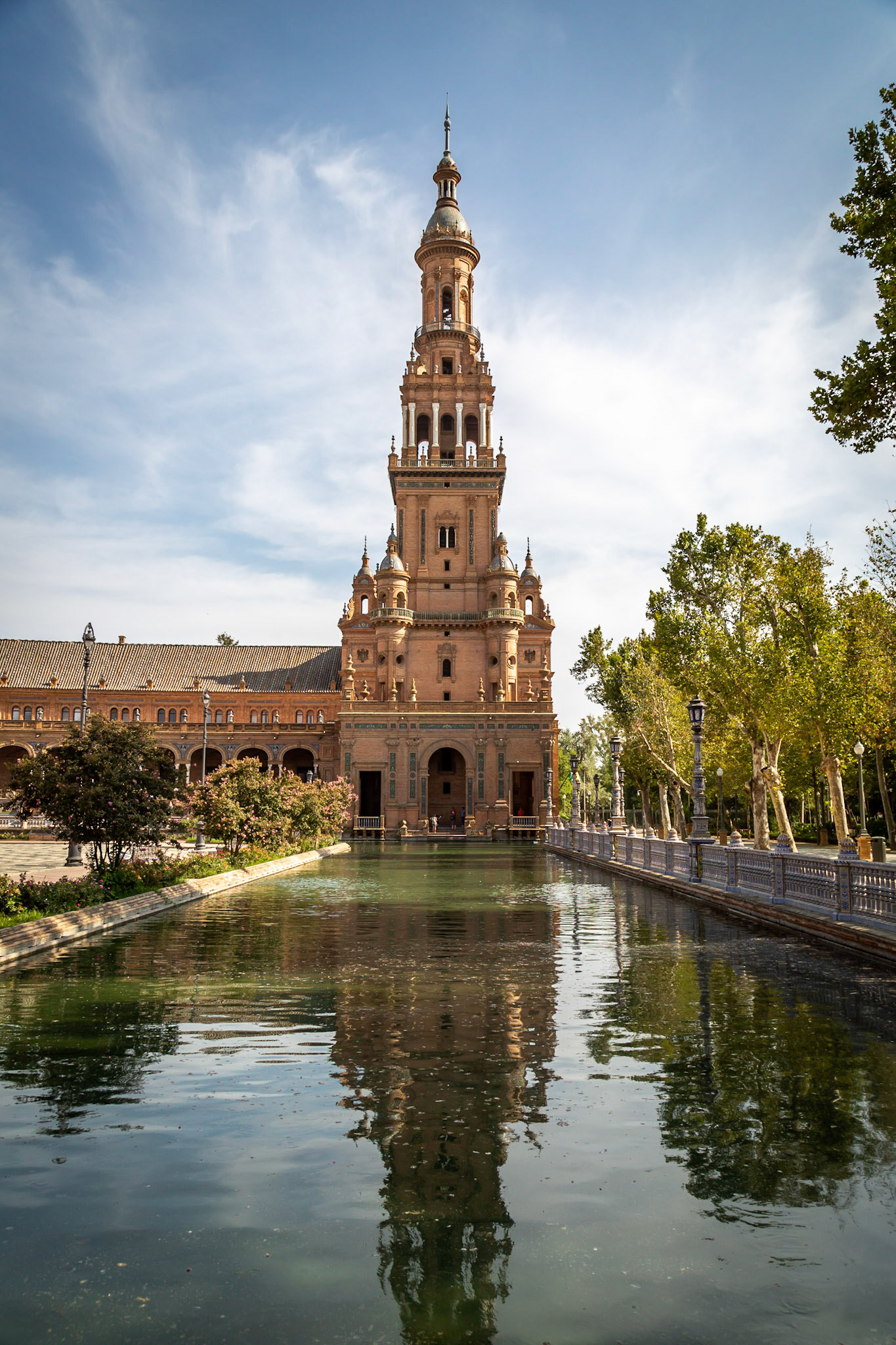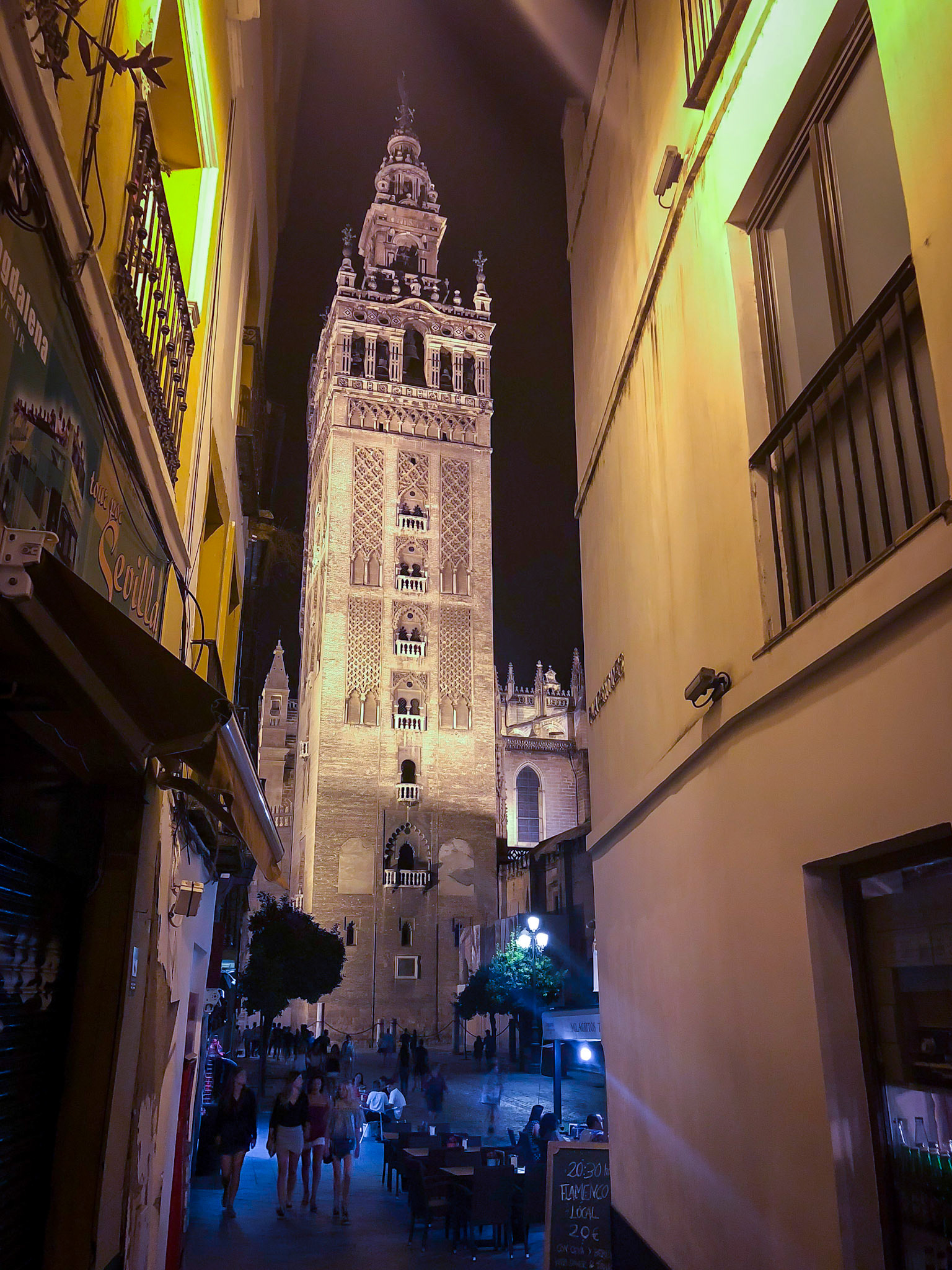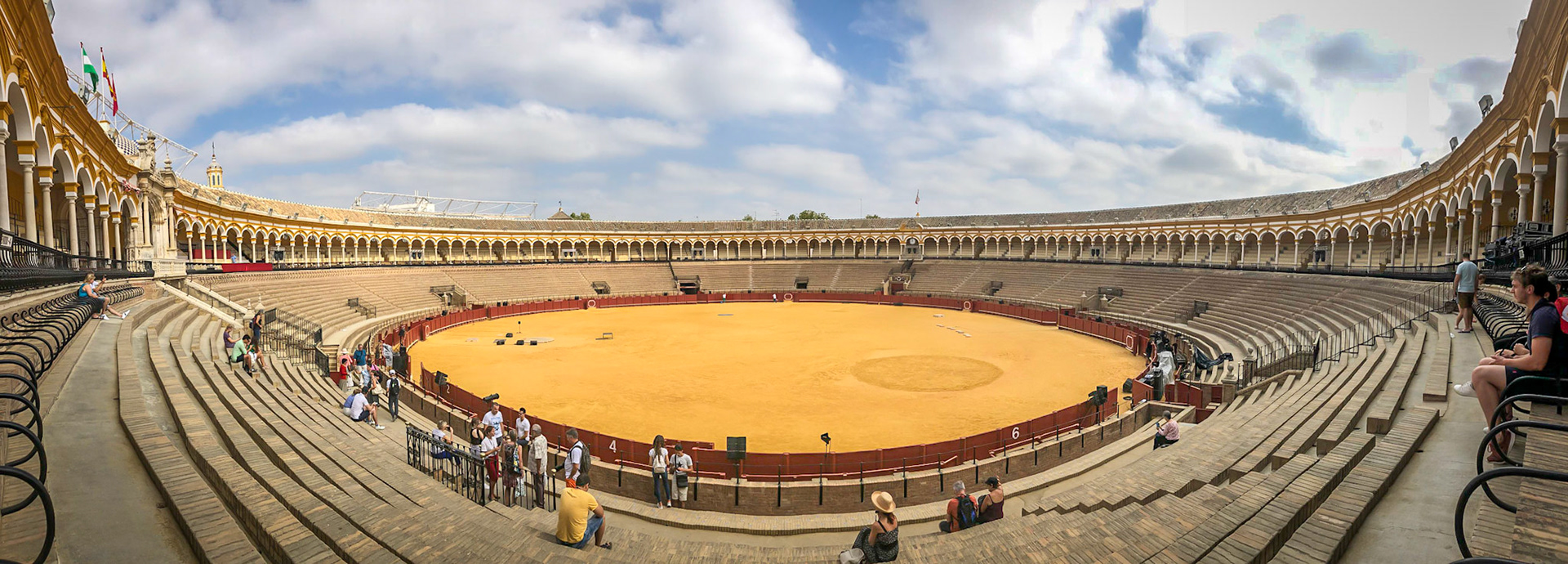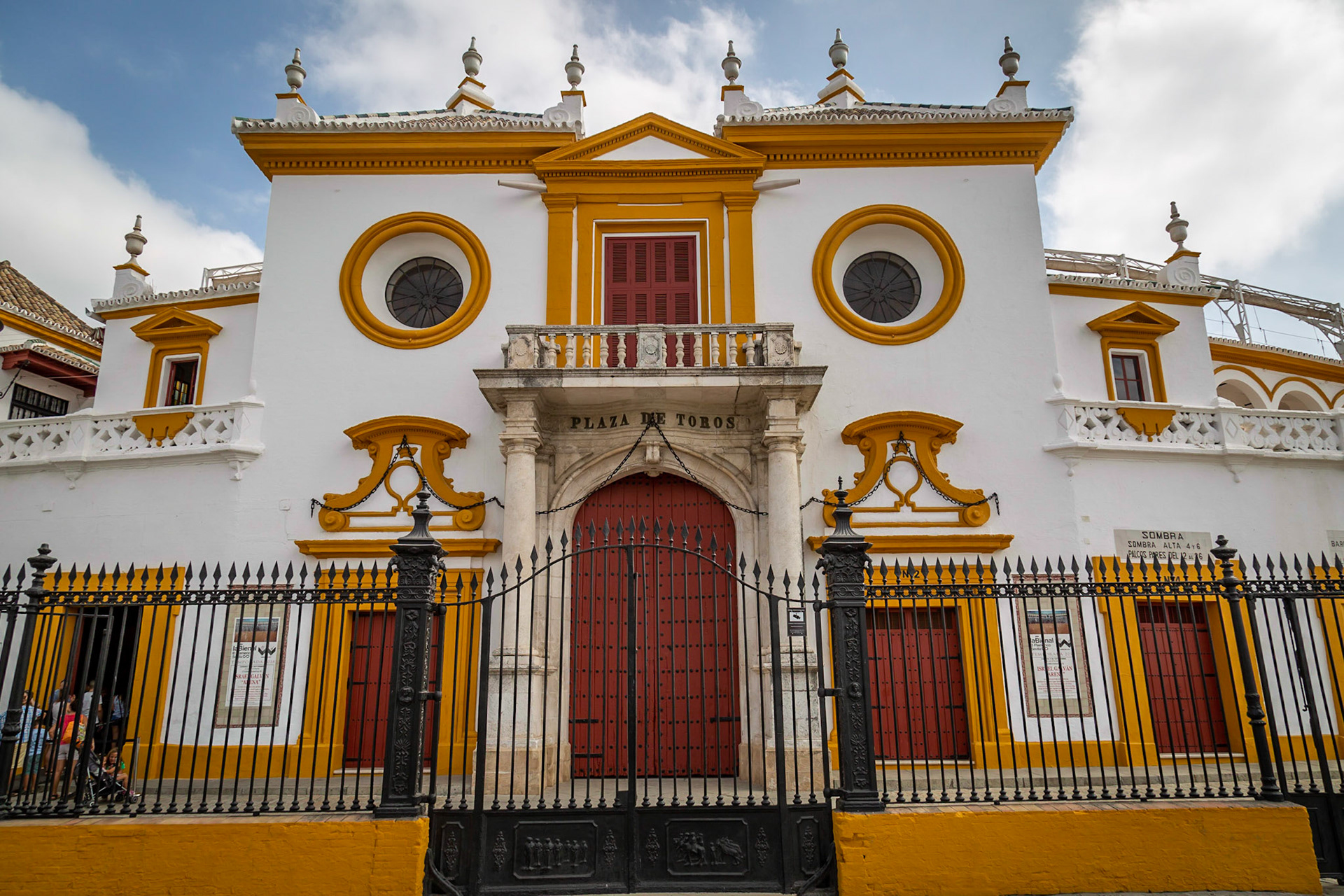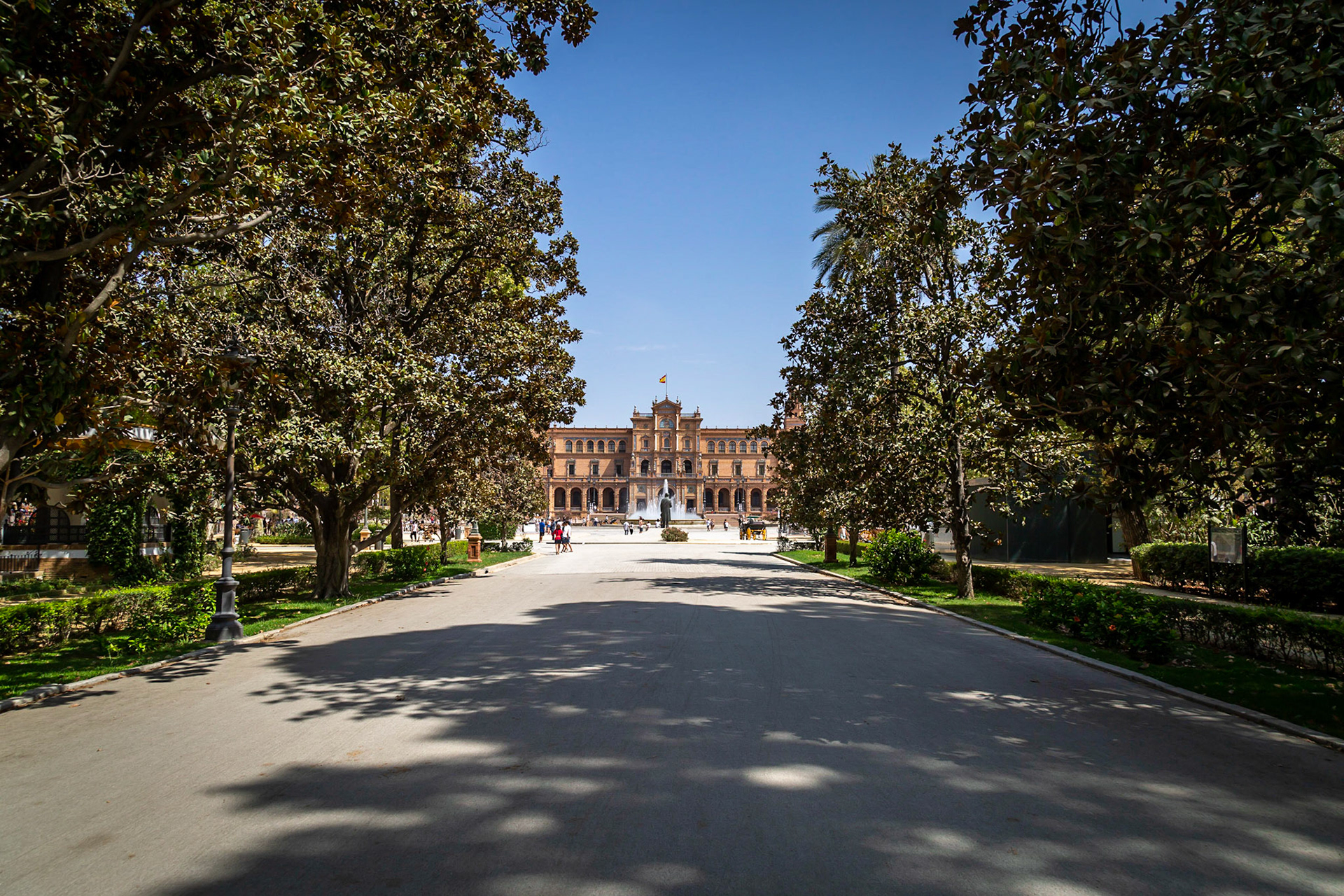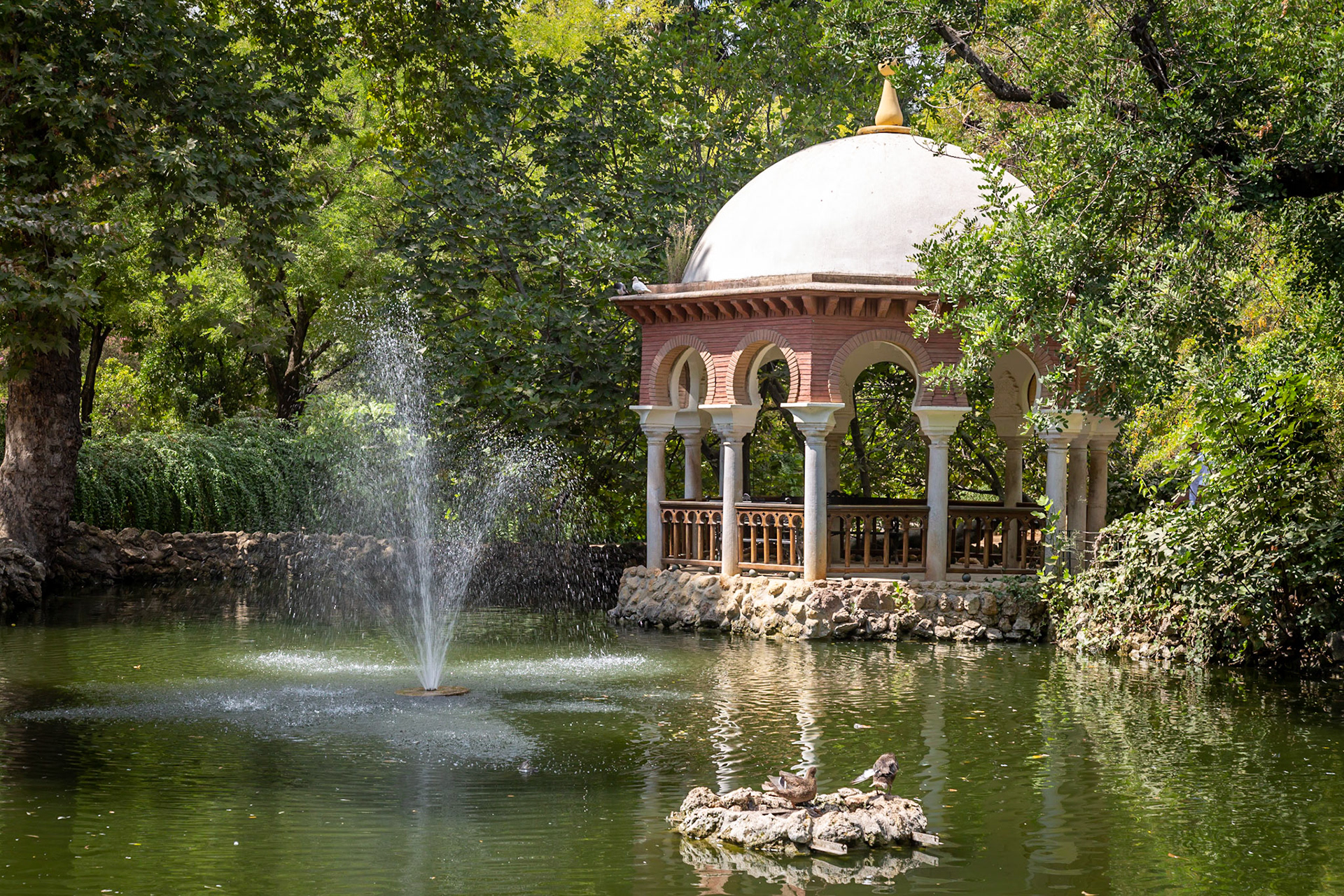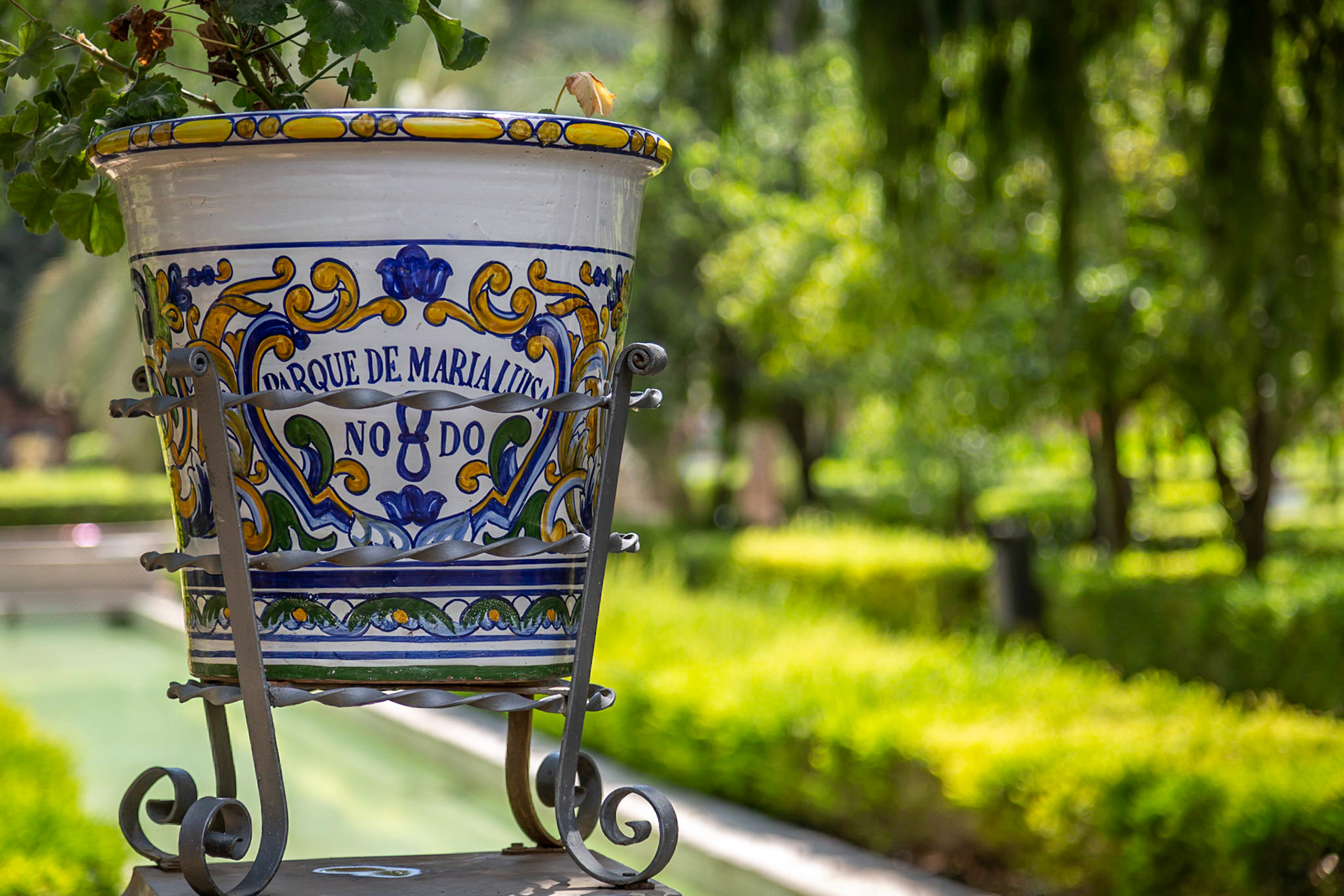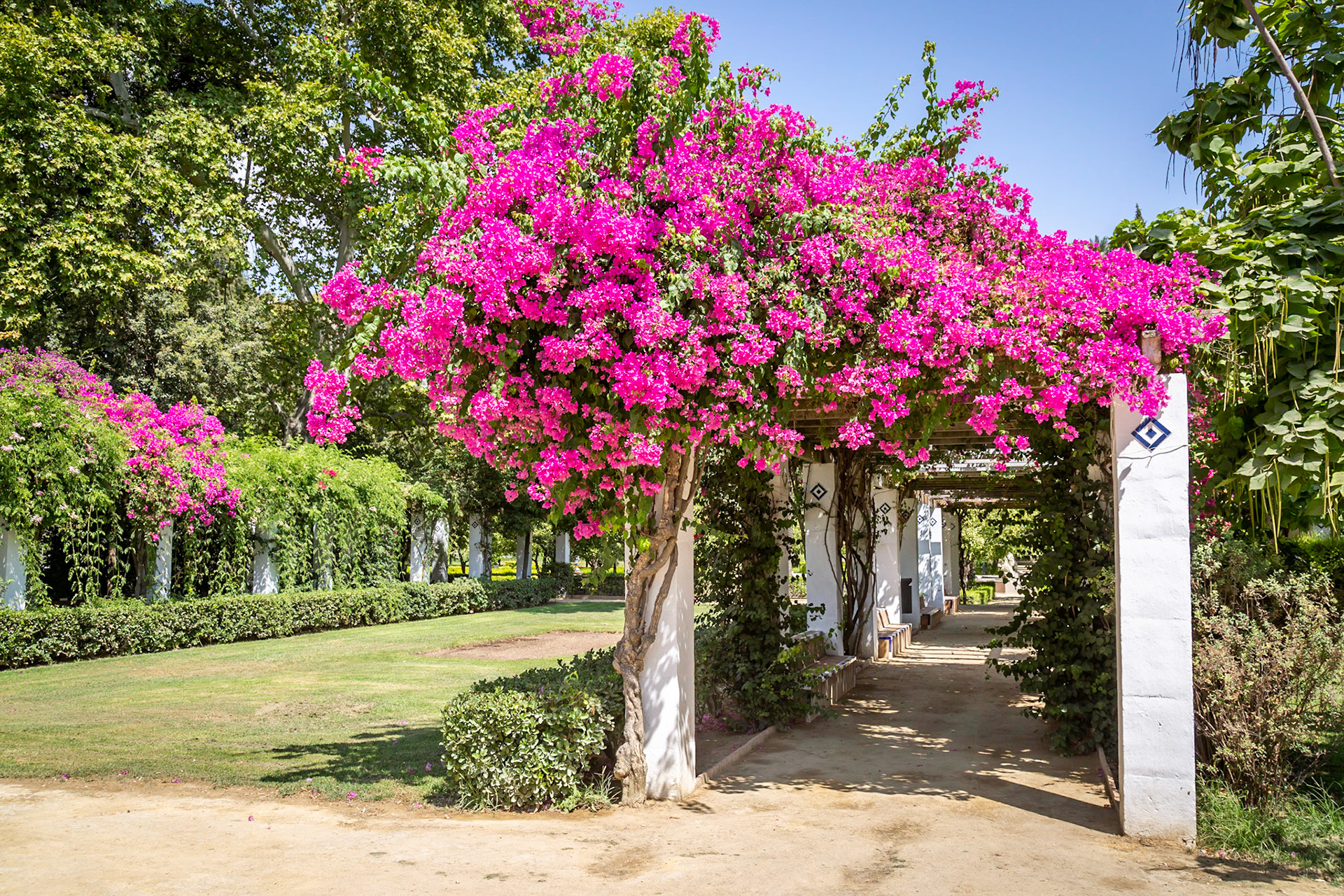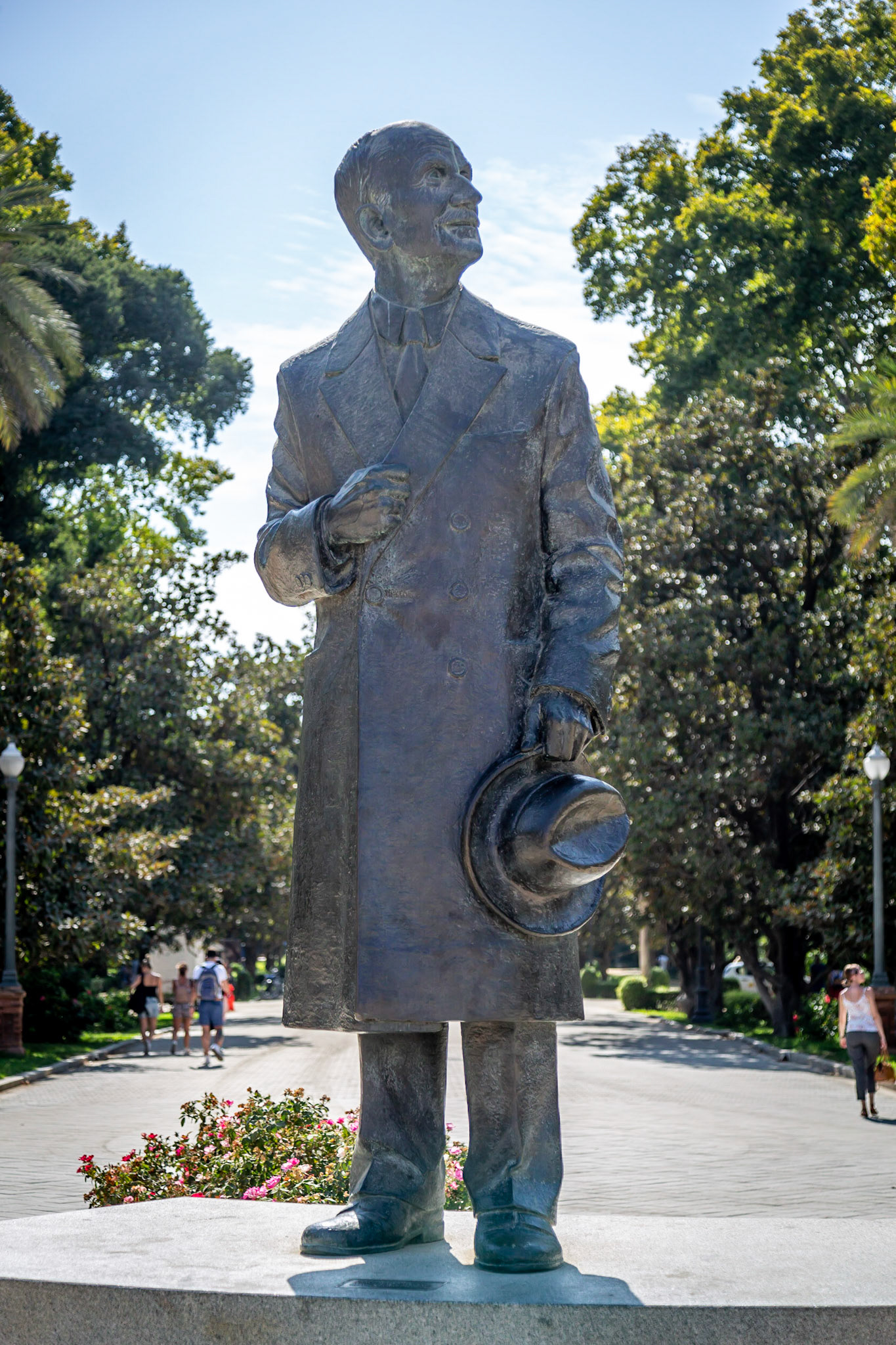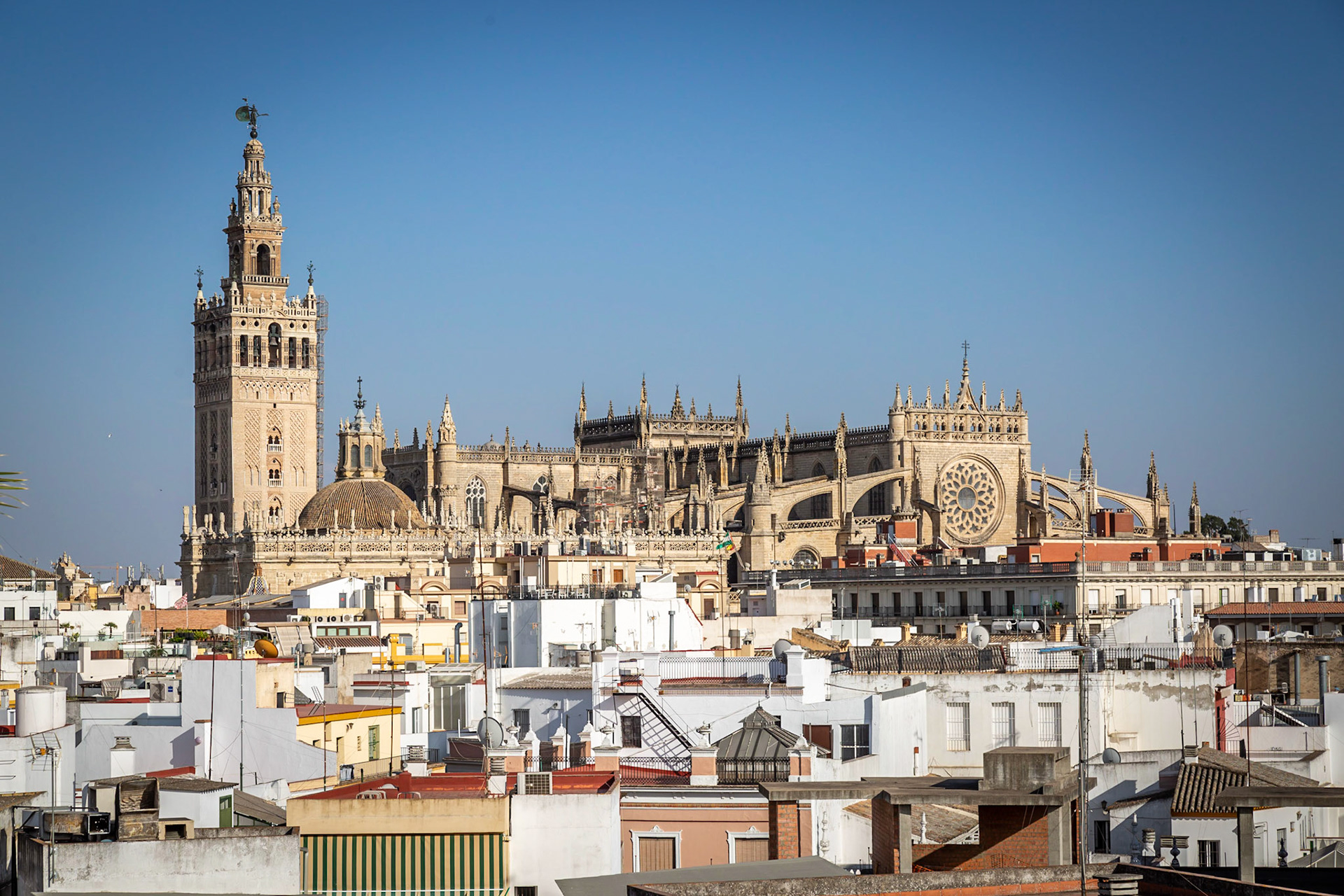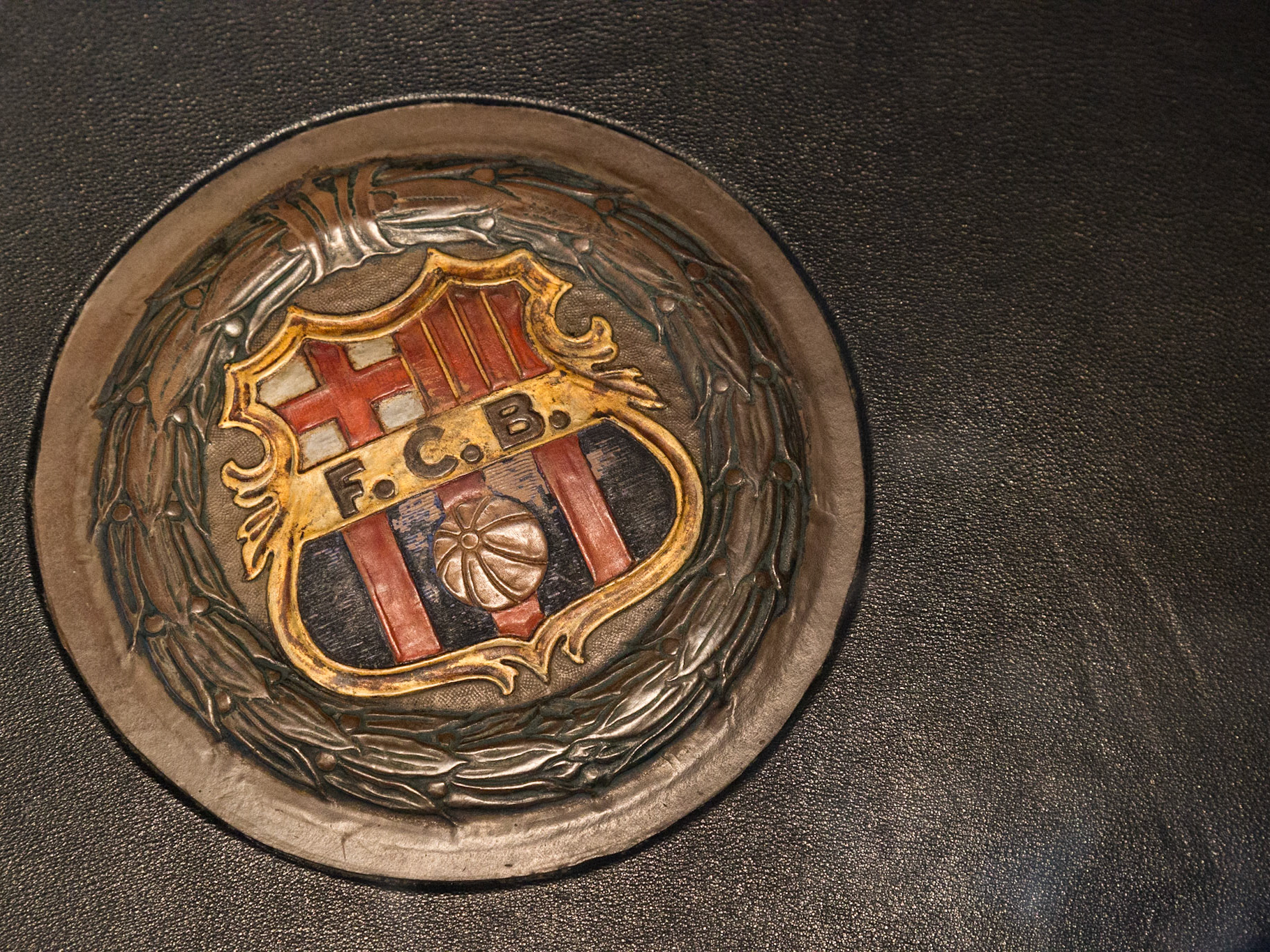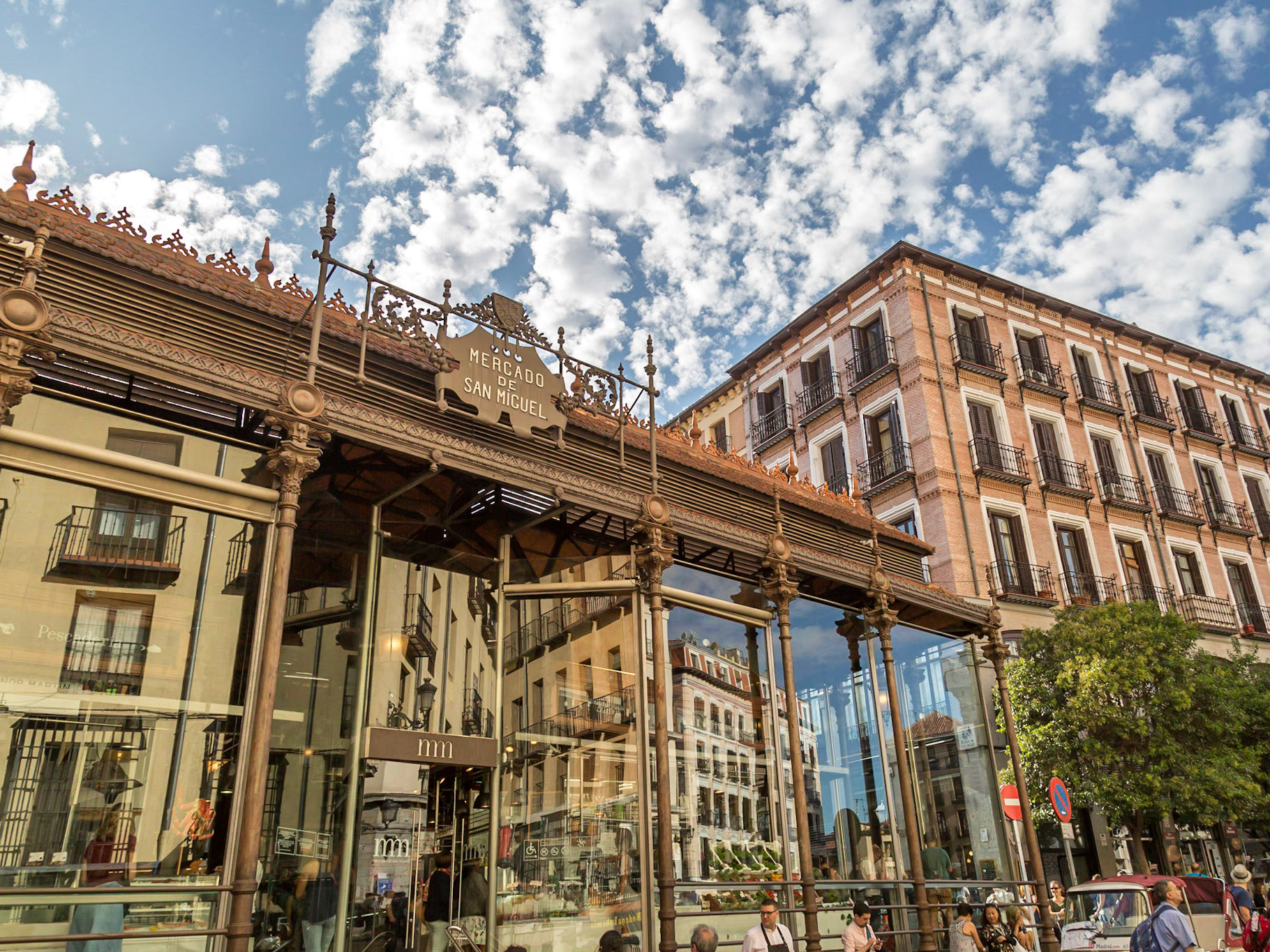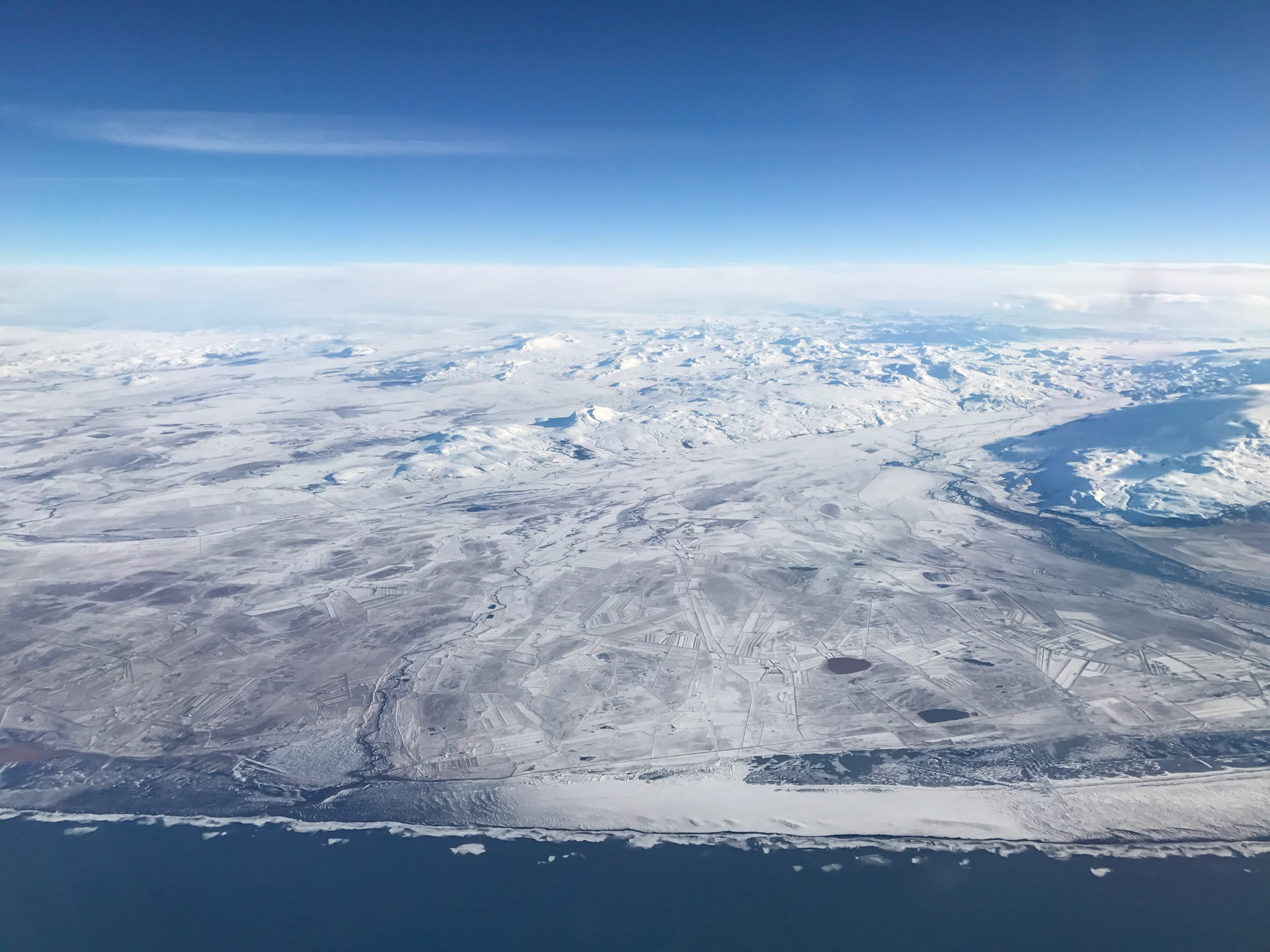
The Plaza de España is a plaza in the Parque de María Luisa, in Seville, Spain, built in 1928 for the Ibero-American Exposition of 1929. It is a landmark example of the Regionalism Architecture, mixing elements of the Renaissance Revival and Moorish Revival styles of Spanish architecture.

Seville is the capital of southern Spain’s Andalusia region. It's famous for flamenco dancing, particularly in its Triana neighborhood. Major landmarks include the ornate Alcázar castle complex, built during the Moorish Almohad dynasty, and the 18th-century Plaza de Toros de la Maestranza bullring. The Gothic Seville Cathedral is the site of Christopher Columbus’s tomb and a minaret turned bell tower, the Giralda.

The Puente de Isabel II, Puente de Triana or Triana Bridge, is a metal arch bridge in Seville, Spain, that connects the Triana neighbourhood with the centre of the city. It crosses the Canal de Alfonso XIII, one of the arms of the River Guadalquivir that isolate Triana as an almost-island.

The Torre del Oro is a dodecagonal military watchtower in Seville, southern Spain. It was erected by the Almohad Caliphate in order to control access to Seville via the Guadalquivir river. Constructed in the first third of the 13th century, the tower served as a prison during the Middle Ages.

The Puente de Isabel II, Puente de Triana or Triana Bridge, is a metal arch bridge in Seville, Spain, that connects the Triana neighbourhood with the centre of the city. It crosses the Canal de Alfonso XIII, one of the arms of the River Guadalquivir that isolate Triana as an almost-island.

Sevilla, Spain - Hotel Vincci la Rabida

The Alcázar of Seville is a royal palace in Seville, Spain, built for the Christian king Peter of Castile. It was built by Castilian Christians on the site of an Abbadid Muslim residential fortress destroyed after the Christian conquest of Seville. Although some elements of other civilizations remains.

The Alcázar of Seville is a royal palace in Seville, Spain, built for the Christian king Peter of Castile. It was built by Castilian Christians on the site of an Abbadid Muslim residential fortress destroyed after the Christian conquest of Seville. Although some elements of other civilizations remains.

The Alcázar of Seville is a royal palace in Seville, Spain, built for the Christian king Peter of Castile. It was built by Castilian Christians on the site of an Abbadid Muslim residential fortress destroyed after the Christian conquest of Seville. Although some elements of other civilizations remains.

The Alcázar of Seville is a royal palace in Seville, Spain, built for the Christian king Peter of Castile. It was built by Castilian Christians on the site of an Abbadid Muslim residential fortress destroyed after the Christian conquest of Seville. Although some elements of other civilizations remains.

The Alcázar of Seville is a royal palace in Seville, Spain, built for the Christian king Peter of Castile. It was built by Castilian Christians on the site of an Abbadid Muslim residential fortress destroyed after the Christian conquest of Seville. Although some elements of other civilizations remains.

The Alcázar of Seville is a royal palace in Seville, Spain, built for the Christian king Peter of Castile. It was built by Castilian Christians on the site of an Abbadid Muslim residential fortress destroyed after the Christian conquest of Seville. Although some elements of other civilizations remains.

18th-century building housing museum detailing flamenco dancing history & culture, plus live shows.

Metropol Parasol is a wooden structure located at La Encarnación square, in the old quarter of Seville, Spain. It was designed by the German architect Jürgen Mayer and completed in April 2011.

Metropol Parasol is a wooden structure located at La Encarnación square, in the old quarter of Seville, Spain. It was designed by the German architect Jürgen Mayer and completed in April 2011.

Metropol Parasol is a wooden structure located at La Encarnación square, in the old quarter of Seville, Spain. It was designed by the German architect Jürgen Mayer and completed in April 2011.

Metropol Parasol is a wooden structure located at La Encarnación square, in the old quarter of Seville, Spain. It was designed by the German architect Jürgen Mayer and completed in April 2011.

The Bank of Spain, is the central bank of Spain. Established in Madrid in 1782 by Charles III, today the bank is a member of the European System of Central Banks. It is the national supervisor of the Spanish banking system, and as such its activity is regulated by the Law of Autonomy of the Banco de España.

The Plaza de España is a plaza in the Parque de María Luisa, in Seville, Spain, built in 1928 for the Ibero-American Exposition of 1929. It is a landmark example of the Regionalism Architecture, mixing elements of the Renaissance Revival and Moorish Revival styles of Spanish architecture.

The Plaza de España is a plaza in the Parque de María Luisa, in Seville, Spain, built in 1928 for the Ibero-American Exposition of 1929. It is a landmark example of the Regionalism Architecture, mixing elements of the Renaissance Revival and Moorish Revival styles of Spanish architecture.

The Plaza de España is a plaza in the Parque de María Luisa, in Seville, Spain, built in 1928 for the Ibero-American Exposition of 1929. It is a landmark example of the Regionalism Architecture, mixing elements of the Renaissance Revival and Moorish Revival styles of Spanish architecture.

The Plaza de España is a plaza in the Parque de María Luisa, in Seville, Spain, built in 1928 for the Ibero-American Exposition of 1929. It is a landmark example of the Regionalism Architecture, mixing elements of the Renaissance Revival and Moorish Revival styles of Spanish architecture.

The Giralda (Spanish: La Giralda) is the bell tower of the Seville Cathedral in Seville, Spain. It was originally built as the minaret for the Great Mosque of Seville in al-Andalus, Moorish Spain, during the reign of the Almohad dynasty, with a Renaissance-style top subsequently added by the Catholics after the expulsion of the Muslims from the area. The Giralda was registered in 1987 as a World Heritage Site by UNESCO, along with the Alcázar and the General Archive of the Indies. The tower is 104.1 m (342 ft) in height and remains one of the most important symbols of the city, as it has been since the Middle Ages.

The Plaza de toros de la Real Maestranza de Caballería de Sevilla is a 12,000-capacity bullring in Seville, Spain. During the annual Seville Fair in Seville, it is the site of one of the most well-known bullfighting festivals in the world.

The Plaza de toros de la Real Maestranza de Caballería de Sevilla is a 12,000-capacity bullring in Seville, Spain. During the annual Seville Fair in Seville, it is the site of one of the most well-known bullfighting festivals in the world.

The Plaza de España is a plaza in the Parque de María Luisa, in Seville, Spain, built in 1928 for the Ibero-American Exposition of 1929. It is a landmark example of the Regionalism Architecture, mixing elements of the Renaissance Revival and Moorish Revival styles of Spanish architecture.

The Parque de María Luisa is a public park that stretches along the Guadalquivir River in Seville, Spain. It is Seville's principal green area.

The Parque de María Luisa is a public park that stretches along the Guadalquivir River in Seville, Spain. It is Seville's principal green area.

The Parque de María Luisa is a public park that stretches along the Guadalquivir River in Seville, Spain. It is Seville's principal green area.

The roundabout of Aníbal González is located in front of the Plaza de España , in María Luisa park , Seville , Andalusia , Spain . It is located in the center of Isabel la Católica avenue, which is pedestrianized.
In the center there is a monument to the architect of the square, Aníbal González Álvarez-Ossorio , which was inaugurated on May 27, 2011. The monument is a 2.5-meter-high bronze statue of the architect, on a granite pedestal next to which descends a ramp. The authors of the monument were the architect Manuel Osuna, and sculptors Manuel Nieto López and Guillermo Plaza.

Sevilla, Spain - Hotel Vincci la Rabida
